Service Design with the Planet in Mind
34 COMBINING SERVICE DESIGN, ECO-DESIGN AND CIRCULAR DESIGN Florie BugeaudRemond 50 WHAT’S CUSTOMER CENTRICITY GOT TO DO WITH THE CLIMATE CRISIS? Ben Reason, Anne van Lieren 53 PAVING THE WAY FOR SUSTAINABLE CHANGE Joost van Leeuwen 70 “WHAT NOW?” Joan Ball
vol 12 no 3 | october 2021 | 18 €
Touchpoint
Volume 12 No. 3
October 2021
The Journal of Service Design
ISSN 1868-6052
Published by Service Design Network
Publisher
Birgit Mager
Editor-in-Chief
Jesse Grimes
Project Management
Axia Zucchi
Cristine Lanzoni
Art Direction
Miriam Becker
www.studio-mint.de
Cover
Miriam Becker
Cover Image
© rawpixel
Pictures
Unless otherwise stated, the copyrights of all images used for illustration lie with the author(s) of the respective article
Printing
Hundt Druck GmbH
Fonts
Mercury G2 Apercu
Service Design Network gGmbH Mülheimer Freiheit 56 D-51063 Köln Germany
www.service-design-network.org
Contact & Advertising Sales Axia Zucchi journal@service-design-network.org
For ordering Touchpoint, please visit www.service-design-network.org/ touchpoint
Service Design with the Planet in Mind
As this issue of Touchpoint goes to press, COP26 is just a few weeks away. This will be the 26th edition of the UN’s climate change summit, and it comes with an urgent burden: It is seen as “… the world’s best last chance to get runaway climate change under control.” No pressure then, as they say.
If the thoughts of thousands of suited delegates meeting in Glasgow does not provide you confidence that our climate emergency will be adequately addressed –and the history of past emission reduction pledges and even announcements from China in the run-up to COP26 don’t inspire confidence – then what are you to do?
What you’re about to read might be a beacon of hope, and offer you the chance to direct your impact as a service designer towards addressing the climate crisis and sustainability concerns in general. As the authors of this issue share from their different perspectives, we can learn to not only take sustainability concerns into account in our work, but our tools and methods can be adapted and expanded to ensure we make positive steps towards addressing them.
Whether it’s applying strategic foresight to develop resilient and sustainable solutions (see Rebello and Black, page 18), adding the concepts of eco-design and circular design to our repertoire (see Bugeaud-Remond, page 34), or getting organisations focussed on their future customers (see Reason and van Lieren, page 50), there is plenty of inspiration as well as actionable insights waiting for you in the upcoming pages. Only time will tell if COP26 achieved its supremely ambitious goal. And looking at the success of past international efforts, it can seem that achieving meaningful progress and a real course reversal would be an incredible breakthrough. However I hold out hope for another reason: More and more service designers from our dispersed, global community are finding themselves in positions of influence in both government and the largest organisations. If – through our roles – we can apply the mindset and techniques shared here, we can surely make a collective impact.
As Al Gore, Nobel Laureate and former US Vice President, said, “Solving the climate crisis is within our grasp, but we need people like you to stand up and act.” Let’s hope this issue (further) inspires you to act, using the unique position you hold as a service designer.
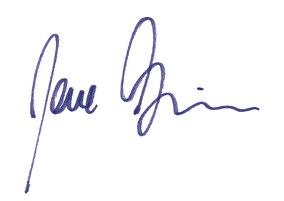






Jesse Grimes is Editor-in-Chief of Touchpoint and has fourteen years of experience as a service designer and consultant. He is an independent practitioner, trainer and coach (kolmiot.com), based in Amsterdam and working internationally. Jesse is also Senior Vice President of the Service Design Network and Head of Training for the SDN Academy.
Beata Bienkowska, Deputy Research and Project Lead, Transition Pathway Initiative, London School of Economics. Prior to this Programme Manager at CISL Accelerator at Cambridge University and officer in the EU institutions and national administration.
Agusta Callaway is a Senior Consultant at Cambria Solutions. Previously she has been an organic farmer, beekeeper, entomological cataloger for Dr. E.O. Wilson, and community wellness initiative leader.
Emiliano Carbone is a Senior Business Designer at Tangity (part of NTT DATA Design Network). He worked both in industry and academia. In today’s service economies, he is engaged in research and strategy for large corporates.
Erik Roscam Abbing is a service designer and innovator with over 25 years of professional experience as consultant, public speaker, author, teacher, coach, entrepreneur and director. He is the global director of innovation at Livework, and teaches at the TU Delft.
Birgit Mager, publisher of Touchpoint, is professor for service design at Köln International School of Design (KISD), Cologne, Germany. She is founder and director of sedes research at KISD and is co-founder and President of the Service Design Network.
Touchpoint 12-3 3 from the editors
Jesse Grimes


34
40
46
Kirsikka
50
LAB LAB UX LAB UX UX 01 02 03 04 types of design structure company A company B & C company D company E Touchpoint 12-3 4 2 IMPRINT 3 FROM THE EDITORS 6 NEWS 8 KERRY'S TAKE 8 Service Design for the Planet Kerry Bodine 10 CROSS-DISCIPLINE 10 Service Design Perspectives: Innovation Labs and UX teams Clarissa Biolchini, Filipe Campelo
FEATURE: SERVICE DESIGN WITH THE PLANET IN MIND 18 Designing the Future We Need Stephanie Rebello, Rebecca Black 24 Emulating Natural Ecosystems in Service Design Sharina Khan 30 Service Design Tools for Sustainable Behaviour Change Mirja Kälviäinen
16
Combining Service Design, Eco-Design and Circular Design
Bugeaud-Remond
Florie
Massive Change –Life-Centred Design
Mager in conversation with Bruce Mau
Birgit
Envisioning Desirable Futures
Vaajakallio, Zeynep Falay
Flitter, Sonja Nielsen, Anna Pyyluoma
Von
What’s Customer Centricity Got to Do with the Climate Crisis?
Reason, 10 40 53
Ben

Touchpoint 12-3 5 contents Anne van Lieren 53 Paving the Way for Sustainable Change Joost van Leeuwen 56 ‘Somatic Design’: Engaging the Body for Climate Healing Emily Wright 62 The Thoughts You Allow Determine Your Actions Remco Lenstra 66 Introducing ‘Planetary’ to Design Yulya Besplemennova 70 “What Now?” Joan Ball 76 TOOLS AND METHODS 76 Applying a Service Design Approach to Understand Household Consumption and Disposal of Medicines in India Urmi Shah, Padma Rele, Shamit Shrivastav 80 Zoom-in on Customer Value Ulla Jones 83 INSIDE SDN 83 Service Design Day 2021 –Thank you for your participation! 84 Financial Inclusion at the Forefront 66 Economic value Hedonic value Altruistic value Emotional value Functional value Directly experienced value Indirectly experienced value Directly and indirectrly experienced value 80
SERVICE DESIGN PRACTITIONER CURRICULUM (TRAINING AND ACCREDITATION)
The SDN Academy is proud to introduce to you our newest initiative: The Service Design Practitioner Curriculum Program starting on November 15, 2021. This unique training program is designed for those who want to build a solid foundation of service design practice and gather theoretical foundations, methodological skills and practical experience. In short, this training is for anyone who wants to learn the basics of service design.
The program consists of 32 hours, structured in six modules of online sessions, five modules of assignments and on-demand content. The participants of this curriculum will get free access to the Accreditation Test to become an official SDN Accredited Practitioner, which includes a two-year SDN membership with all its benefits. This training will be facilitated

by our very own SDN President and SDN Accredited Master, Prof. Birgit Mager, our SDN Accredited Master Barbara WeberKainz, Linda Kaszubski and other exclusive international guests.
Please note: SDN Members enjoy a discounted course fee. We at the SDN support financial inclusion
as part of our DEI mission (Diversity, Equity and Inclusion), based on the world bank clusters. If you think you are eligible for a reduction in the course fee due to the country you live in, please get in touch with us at info@sdn-academy.org!
You can register for the course at https://bit.ly/SDNA_SDPC21 .
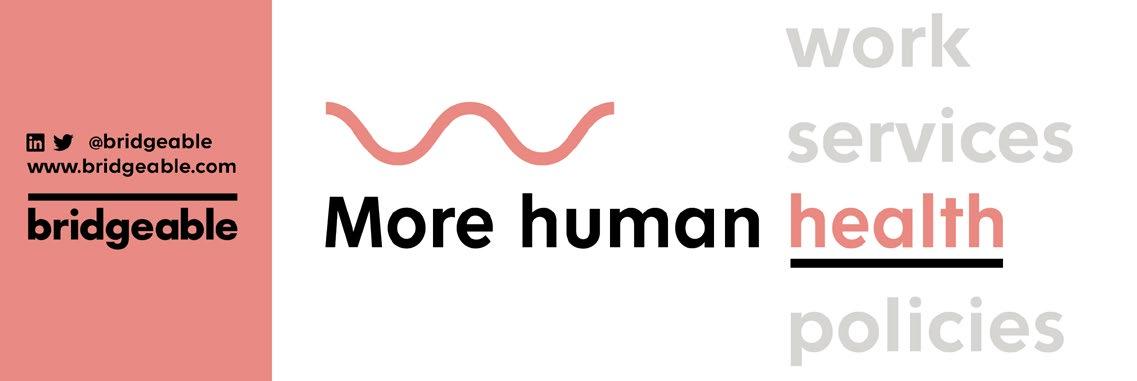
SERVICE DESIGN AWARD 2020/21 AT SDGC21
The SDN is incredibly pleased to invite you to join the Service Design Award Ceremony, where we will celebrate our finalists and announce the winners, on 21 October during the Service Design Global Conference (SDGC21). Our host will be Kerry Bodine, Head of Jury 2020/21.
We cannot wait to honour ten extraordinary finalist projects and give them a spotlight they deserve. We encourage you to take a look at their excellent project work! The complete list of shortlisted projects and finalist case studies is available at https://www.service-design-network. org/service-design-award-finalists.
All attendees of SDGC21 will have a unique opportunity to hear from our winners and find out more about their incredible work, as part of the conference programme. Each winning project will be presented in a 20-minute session followed by Q&A.
Once again, congratulations to our finalists on their work and for being recognised as a benchmark for a world-class service design.
We hope you will join us to see our nominees and discover the winners!
Special thanks to the 2020/21
Jury: Kerry Bodine, Taina Mäkijärvi, Kate Okrasinski, Luis Alt, Damian Kernahan, J. Margus Klaar and Florian Vollmer.
Written by Sonja Jazic –Project Manager at the SDN

Service Design Award Finalists
Touchpoint 12-3 7 news
S E R V I C E D E S IG N AWAR D 2 021
GLOBAL BENCHMARK FOR WORLD-CLASS SERVICE DESIGN
THE
#SDAWARD
Photo by Kvalifik on Unsplash
Service Design for the Planet
Driving along the U.S Route 27 north of Cincinnati, Ohio, you can catch sight of a mountain. It’s not majestically jagged like the European Alps — nor endlessly undulating like the much older Appalachians, which sweep from Canada through the southern United States. In fact, you might not understand the true nature of Mt. Rumpke until you get closer… and smell it.
Named for the Rumpke Waste & Recycling company, this ‘mountain’ stands 328 meters above sea level, towering above all other landforms in Hamilton County, and counts as the sixth largest landfill in the U.S.
Whenever I throw something into our kitchen wastebin, which I’ve labelled ‘landfill’ to subtly encourage my family and me to make more environmentally friendly purchases, I think of Mt. Rumpke — and the continually growing landfills around the world. A disturbing statistic sticks in my mind: In my home county of Sonoma, California, the landfills will reach capacity in 28 years if we don’t change how we manage our waste. And our lives.
The online shopping dilemma One of the biggest changes to my personal behaviour over the past
decade has been how often I opt to shop online. Like many people, I struggle to pack in all of my mustdo’s and want-to-do’s into each day’s schedule. There are a million online retailers that make online shopping easy and offer nearly everything I could ever want. Most often free shipping and returns. And to be completely honest, I hate trying on clothes in a dressing room. In short: Online shopping works for me. And it works for millions of others, too.
But with every click of the ‘add to cart’ button, I stress about the environmental impact of my purchases. Rather than taking advantage of optimised bulk product shipments to retail stores, my online purchases prompt companies to pack up individual items in plastic and Styrofoam and use fossil fuels to deliver them right to my door. And
more often than I’d like, I see terrible inefficiencies in the packaging. A recent purchase of three small cork boxes from retailer Design Within Reach — which we purposely selected over plastic alternatives — arrived in three separate packages, each filled to the brim with a ridiculous amount of packing paper.
Even worse is the returns process. I recently purchased a bunch of inexpensive summer dresses from discount retailer Target. Given the current supply chain delays, I didn’t think much when they arrived in separate packages over the course of a couple weeks — I just dutifully waited for all of the items in my order to arrive so that I could return my unwanted items all in one go. But when I started the returns process, Target instructed me to return the items from each individual shipment in a separate package.
This process was an inconvenience from my perspective as a customer — it would have been so much easier to just put everything into one bag or box. But Target’s requirement also necessitated additional packaging and tons of non-biodegradable tape. Sigh. I thought of Mt. Rumpke and made a mental note not to order online from Target again.
Touchpoint 12-3 8
Designing the backstage
Online shopping is not going away. Nor are many other modern services that we’ve come to rely on — services that often fulfill our immediate needs at the expense of our long-term human objectives. I don’t believe these two things need to be at odds with one another. And I know that service designers are uniquely positioned to marry these two seemingly competing forces.
Service designers can create backend processes for sourcing environmentally friendly packing materials and for ensuring items are packed as efficiently as possible. Service designers can define warehouse procedures that accept return packages with items from multiple shipments and multiple shipping locations.
All it takes is a desire on the part of service designers to truly embrace the nitty, gritty (and sometimes complex and ugly) backstage people, processes and technology behind the services we’ve all grown to rely on.
Staffing for the planet
As our business landscape has changed over the past several decades, organisations have responded by creating new roles
to support both business mechanics and customers. I’ve personally seen the introduction of corporate responsibility specialists, diversity and inclusion managers, customer experience professionals, customer success managers and journey managers. It’s time to expand this list to include professionals focused on reducing the carbon footprint of their employers.
Recology — a waste, recycling and composting company headquartered in San Francisco — has Waste Zero Specialists who are responsible for helping residential, commercial and industrial customers throw away less — and recycle and compost more. Such roles shouldn’t be limited to waste management companies. And service designers are in a unique position to champion the creation of these positions with their clients or employers.
Driving change through demand
At the end of the day, organisations respond to the demands of their customers or constituents. And so, the most effective way for all of us to impact the future of our planet may be for us to become better ‘consumers.’ I typically avoid this
word, as I feel it reduces humans to resource-gobbling automatons.
But in this case, it feels appropriate. We all need to think about how we can consume less. How we can reduce and reuse more. And when organisations realise that their bottom lines depend on meeting our collective needs to support our planet, change will come.

Kerry Bodine is a customer experience expert and the co-author of Outside In Her research, analysis and opinions appear frequently on sites such as Harvard Business Review, Forbes, and Fast Company.
Follow Kerry on Twitter at @kerrybodine
Touchpoint 12-3 9 kerry ' s take
Service Design Perspectives: Innovation Labs and UX teams
A study of service providers in Brazil

Clarissa Biolchini, CEO of Archipelago, adjunct professor at PUC-Rio and guest lecturer at Berlin School of Creative Leadership. One of the co-authors of the book This is Service Design Doing from Stickdorn et al

Filipe Campelo, professor and researcher at Design Graduate Program Universidade do Vale do Rio dos Sinos (UNISINOS). His research interests are related to user experience, design management and food design.
In the 21st century, design’s scope has been amplified in the business context. Due to the digital revolution and the emergence of new technologies, in order to foster innovation and adapt to market changes and to new consumer needs, the majority of organisations have increased their investments in design.
As mentioned by Mager and Moussavian1 , service design and Design Thinking have been applied in large companies to deal with the great complexity of companies and markets. This article presents the results of research about in-house innovation labs in large Brazilian organisations, represented by five service providers in the insurance, finance, payment methods and media industries, all of which are non-digital native companies that were established around fifty years ago. The focus of our research was on in-house, design-driven innovation labs – which are mainly service design labs. However, due to the digital transformation processes identified during the interviews, the User Experience (UX) areas appeared as an
essential element, since they represent the major design areas in organisations
Innovation labs can be understood as vehicles to disseminate the service design process and enable non-designers to experiment 2 . One of their missions is to increase organisational cultural transformation towards a more designoriented mindset. They can enable knowledge diffusion amongst different organisational silos as well as promote space for collaboration and innovation3 .
Non-digital-native companies versus digital-native companies
For better understanding design’s increasing relevance in corporate practices, it is important to take into
2 Magadeley, W. & Birdi, K. (2009). Innovation labs: an examination into the use of physical spaces to enhance organisational creativity. Creativity and innovation management, 18, 4, 315-325.
1 Mager, B. & Moussavian, R. (2017). Design thinking inhouse – design-driven innovation labs. Service Design Network.
3 Fecher, F; Winding, J.; Hutter, K. & Füller, J. (2020). Innovation labs from a participant’ perspective. Journal of Business Research, 110, 567-576.
Touchpoint 12-3 10
consideration two different types of organisations. Over the past two decades, a great number of companies such as Uber and Airbnb have emerged in the consumer market, presenting new business models and ecosystems, and offering new value propositions and experiences for their customers. Most of these digital-native companies adopt design principles as a regular practice, combining them with technology, as a natural way to achieve better results. These companies are structured based on an agile mindset and place user experience (UX) and user centricity as the main pillars of their organisational culture and structures. On the other hand, the largest 20th century service providers such as those in the banking and insurance industries turned out suddenly to be laggards compared to these ‘new kids on the block’.
Driven by increasingly complex challenges, these ‘non-digital-native’ companies were forced to focus on digital transformation. Among other strategies, they created in-house, design-driven innovation labs, adopting Design Thinking and service design as core engines for their innovation processes.
Innovation labs versus UX teams
The results of this research lead to several findings described further in this article. The study points out the main connections between service design and UX teams with regard to organisational aspects, such as the company’s design maturity level, the industry’s market innovation level and the organisational culture. Finally, it presents a perspective of service designers’ roles in these companies and offers a future vision of how service design will evolve in future years in organisational terms.
According to our study, non-digital-native companies created their in-house innovation labs to foster product or service innovation and to amplify design and innovation culture within their corporate contexts. These companies typically created their labs around 2012. Due to the lack of organisational know-how in design culture, they hired external innovation consultancies in order to assist them to structure their labs’ work in the initial phases of the design process. In addition, they also created their first UX structures. One of the biggest companies we researched created five service design squads and a UX team by then, all under the IT department. Initially, four of these service design teams were working for specific business units, such as the “UX team for credit cards”, and one of them functioned more like an innovation lab under the label of “Innovation and UX area”. The function of these teams was to deliver research reports focused on the integration of technology, digital products and users. Even though these first five design teams were not named as ‘labs’, they functioned as such, developing new ideas and services for the business units. They were seen as in-house suppliers to their own business units. “Our company was very focused on products, and the design and IT teams were seen as internal suppliers”, said a service design manager.
Innovation labs versus UX teams: Roles, scope and team structures
While innovation labs work more according to a consultancy model, focusing on specific projects and creating deliverables such as a service blueprints, the UX teams work according to an ongoing operation
Touchpoint 12-3 11
cross - discipline
model, in order to continuously deliver and improve the digital experience for the end customer.
Considering the working models of these design teams in non-digital native companies, the labs have two types of clients: internal clients (within the company) and external clients (the company’s own clients as well as business partners with which they co-create new products or business models for partnership). They also tackle in-house demands, such as organisational design projects or employee experience projects. On the other hand, the UX teams focus on end consumers, aiming to provide a better digital experience for end customers – a common goal for both digital and non-digital-native companies.
As such, in non-digital-native companies, design expansion has occurred by combining innovation labs with the work of UX teams. In these companies, while innovation labs generally focus on innovation for services and business models, the UX teams focus on digital user experiences.
Concerning roles and organisational structure, our study revealed that all the companies studied have different design structures, either innovation labs or UX teams, according to their sizes, industries and business models. The different structures and roles might vary according to their organisational contexts. In the non-digital-native companies, depending on their structure, innovation labs might belong to different areas, such as product development, marketing or business development or Customer Experience (CX), whereas the UX teams are generally connected to the IT department. In contrast, in the digital company, UX is a core area, and UX teams are directly connected to business units.
Team structures
In terms of team members, UX teams typically feature a wide range of design expertise, from design researchers to UI designers, all of whom are focused on digital products, without a defined scope for service design. In digital companies, UX teams follow this same model, however, UX teams’ heads take on
more strategic roles, since they are connected to the business units and report to the corporate level.
Concerning the total number of designers in the company, due to the growth of digital areas in 21st-century companies, UX areas typically have many more designers, compared to the number present in innovation labs. While team sizes in innovation labs can go up to 10 or 11 designers, UX teams have many more, ranging from 60 to 280 people. In total, in Company A, there are around 150 designers (internationally), including the 13 global innovation labs’ teams and the UX team in the US, which has approximately 80 people. Company B has about 65 designers, Company C around 300 designers, Company D around 180 designers, and Company E around 170 designers in total. The 170 designers of Company E (digital company) are part of the UX team that has 336 professionals – including design, research and content specialists. The table with the description of the cases studied is shown in Figure 1.
The merger of innovation labs and UX teams
In non-digital-native companies, as design has become more and more integrated into their corporate cultures, and digital transformation has taken over organisational strategy, the original labs have eventually merged into other areas. Some of them have been incorporated into UX areas and others have been integrated into new design areas, in marketing or business units. As a senior manager said, “Over the years, the labs finally got diluted. It didn’t make sense to have innovation labs anymore.”
According to the four types of design structures presented in Figure 2, in companies A to D, the design structures have evolved from being only innovation labs, towards having independent labs and UX teams, towards a merged team. Finally, the digital company (E) does not have a lab and possesses the largest UX department among the five companies reviewed, composed of a 336-employee team in the Latin American region. “Since innovation is spread over the areas of UX, products, IT areas and some business units, there is no need for an innovation lab”, said a UX leader.
Touchpoint 12-3 12
Company
Industry
A
Financial services
Design area’s name Company area
“Innovation Studio” Solutions & innovation
Design structure
LAB
Team structure
Scope of areas
Type of client
LAB + UX
LAB 3 people
Total
~ 150 designers*
LAB: Service and business model innovation**
External Type 1 Insurance
“Innovation Labs”
C
Life insurance (product area)
Type 3 Type 4 B
LAB + UX
Media Communication “Strategic Design & Innovation” Innovation
Banking
E-commerce
“CX” “UX”
Channels & experience IT
LAB + UX area
LAB 5 people
Total
~ 65 designers
LAB: Service/ produt innovation (starting on business model innovation)
UX: digital channels
Internal (end consumer) and external Type 2
LAB + UX
LAB + UX areas
LAB 11 people
Total
~ 300 designers
CX (Design + UX) + other labs and service design (marketing)
UX + Design + SD
Total ~ 170 designers
UX
UX
Total
~ 170 designers
LAB: service design focused on business design
UX: digital experience
Internal and external Type 2
Service/product design and user experience
Service/product design and user experience
Internal (end consumer) and external
Internal (end consumer)
D
Touchpoint 12-3 13 cross - discipline
E
Fig. 1: Company characteristics
The innovation lab role and a future vision of service design Innovation labs play a fundamental role in digital transformation processes in non-digital native companies, since they foster innovation by creating better services for their customers –whether digital or not – and they also nurture the organisation’s innovation culture. For all non-digital native companies, labs have taken on the role of building up innovation culture, based on design principles, such as user-centricity, problem-solving, creativity, empathy and divergent thinking.
Our research points to a future scenario in which Labs might no longer exist in the nondigital-native companies, at least not with their initial role and structure. Depending on the type of industry and design maturity level of the company, labs teams might evolve into in-house service design areas, or merge into UX teams. On the other hand, in digital companies, UX teams will likely focus on digital products, with UX heads frequently taking over the role of strategists, as business designers and service designers.
According to the 12 executives interviewed in these companies, the leaders of UX teams must have a more strategic vision, guided by service design and business expertise. According to them, over the next decade, service design will play a more strategic role in all kinds of organisations.
Furthermore, service design skills will be needed in strategic positions, connected to business areas in order to support service innovation from a strategic point of view. Therefore, the future of service design is likely to become more strategic and fundamental to business.
LAB LAB UX LAB UX UX 01 02 03 04 types of design structure company A company B & C company D company E Touchpoint 12-3 14
Fig. 2: Types of design structures
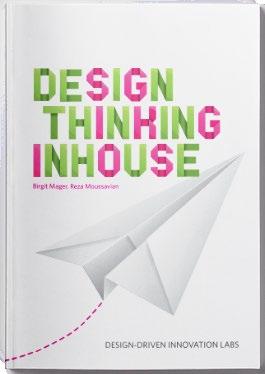
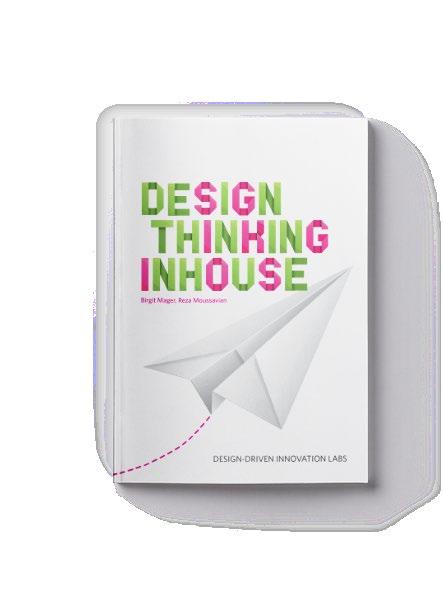

Touchpoint 12-3 15 Want to Dive Deeper? Have a Look at Our Publications! Service Design Award Annual Softback 168 pages 190 x 255 mm 4-colour litho Designed by the SDN with love Design Thinking Inhouse Digital Publication (PDF) 107 pages 210 x 150 mm Published in English and German You can order these and many more publications on our website: www.service-design-network.org/ books-and-reports. 25 % Discount for SDN Members
Service Design with the Planet in Mind
feature
Designing the Future We Need
How design and foresight can support community sustainability strategies and spur transformative change

Stephanie Rebello is a design researcher and strategist specialising in sustainability and purpose-driven programming, Steph is focused on building equitable and inclusive communities, products and services at leading Canadian organisations, Steph holds a BA in Sociology from Western University and a Master of Design in Strategic Foresight and Innovation at OCADU.

Rebecca Black works with a range of international clients seeking low-carbon solutions and behaviours to address the climate crisis at her design consultancy Black Current. Rebecca holds a Master of Environmental Studies specialising in Business & Sustainability from York University, and a Master of Design program in Strategic Foresight & Innovation at OCADU.
The concept of sustainability embraces a wide range of opportunity areas, as the diversity of the United Nations’ Sustainable Development Goals (SDGs) demonstrates1. What role might service design play to address the SDGs and help steer the transformation to sustainable and resilient solutions? We explore how organisations might respond strategically to these challenges and opportunities through the practice of strategic foresight and design.
As catastrophic climate events spur disastrous human and planetary impacts, it’s clear that current sustainability strategies aren’t meeting international sustainability targets2 . Decades of minimal responsiveness and incremental action have failed.
As sustainability practitioners alarmed by the slow pace of change, we set out to gain a deeper understanding of why we are stuck in an incremental change process when bigger action is urgently needed. We started by exploring the interconnected nature of the sustainability challenge and what’s holding transformative change back (see Fig. 1).
We also sought out new and emerging approaches and tools for defining and designing for sustainability. Of particular inspiration was Ezio Manzini, Professor of Industrial Design at Milan Polytechnic and a leading expert on sustainable design. His focus is on scenario building toward improved environmental and
social outcomes. At Barcelona’s ElisavaDesign School and Engineering, his work draws inspiration from the practice of collaborative food networks, describing sustainability at its core as ‘new ways of living and producing’. His work informs an emerging definition of sustainability which is rooted in “a multiplicity of initiatives performed by a variety of people, associations, enterprises, and local governments who, from different starting points, move towards similar ideas of wellbeing and production”4 . Our resultant understanding of the macro-systems and current trends that are shaping the sustainability
1 https://www.un.org/sustainabledevelopment/
2 Hrvatin, V. (2016, May 31). A brief history of Canada’s climate change agreements. [article]. Canadian Geographic. Retrieved July 14, 2021, at canadiangeographic.ca/article/brief-historycanadas-climate-change-agreements
18 Touchpoint 12-3
Barriers to transformative sustainability



Economy built on natural resource
A linear supply chain with poorly resourced and incentivised recycling system
Culture of convenience
A consumer base focused on immediate gratification
Legac y of in stitutionalised racis m
Historical ignorance to indigenous sustainability principles
Political frag mentation
Conflicting priorities and tensions amongst federal and provincial levels of government



Green-washing
Precarious corporate philanthropy and profit-driven cause marketing
Ambiguous definition of sustainability
Practitioners approach sustainability differently, this misalignment causes silos, and feeds competition
Sustainability as a premium product
Sustainability remains largely reserved for Canada's elite as a status indicator
landscape, and emerging models of design for community resilience, provided the foundation for the design case study explored in the article.
Towards Sustainable Futures: The FutureTREC Case Study
TREC (Toronto Renewable Energy Co-op) is a nonprofit leader in community-scale renewable energy and social finance in Toronto, Canada. TREC believes in a democratic, community-scaled vision of sustainability.
3 Black, R. & Rebello, S. (2021). Towards Sustainable Futures –Using strategic foresight in the design of transformative sustainability [Masters Thesis].
4 See Manzini (2013), Resilient Systems & Sustainable Qualities. Small, local, open, connected: An emerging scenario [report]
In the past 15 years they have incubated communityfinanced solar and wind power cooperatives and a social finance service that helps organisations leverage community capital to support iconic local projects. Their approach is highly aligned with Manzini’s communitybased solutions.
In early 2020, TREC intended to conduct a strategic planning process to determine their next direction to propel the clean energy and sustainability sector. They were keen to try something new and different, despite the global pandemic, which introduced a new layer of complexity to planning.
We jumped at the invitation to design a process for TREC that would inspire creativity and spur participants to make some big but relevant bets on what a sustainable future and strategic
Touchpoint 12-3 19 service design with the planet in mind
Fig. 1: A summary of key barriers towards transformative sustainability revealed through an evaluation of Canada’s history with sustainable practice and policy3
direction might look like. Designing a participatory and collaborative creative design process, dubbed FutureTREC, allowed our case-partner to engage its robust community, clients and stakeholders.
Over a five-month timeline, we leveraged strategic foresight to explore the use of future scenarios to help spur transformative change. The process involved using persona mapping and prototyping to situate emergent strategies and ideas, and mapping insights across an innovation matrix to support TREC in resourcing the transformation. The process evolved at each phase, as we iterated based on emerging knowledge from our research and, more importantly, with the insights and feedback from TREC participants.
Defining Sustainability for the FutureTREC Project
The concept of sustainability embraces a wide range of opportunity areas, as the diverse list of the SDGs demonstrates. In the FutureTREC project, we worked with management to pinpoint what types of projects and opportunity areas embraced the SDGs and aligned with the organisation's core values. We landed on five opportunity areas that were then tested through a TREC community survey:
1. Driving the Circular Economy: Educate, advocate and incubate inspirational projects that help decouple local economic growth from the consumption of finite world resources;
2. Improving Lives in our Cities: Create breakthrough urban experiences by leveraging democratic, collaborative, community-building financing, tools and systems;
3. Promoting Local Energy Independence: Accelerate our transition to a zero-carbon future through locally owned, community-scaled energy projects;
4. Facilitating Inclusive Communities: Amplify and prioritise projects led by members of underserved communities including youth;
5. Community Economic Resilience: Help our communities thrive in the face of unprecedented challenges, through local investments in projects that promote sustainability and foster local job growth.
The survey results saw Community Economic Resilience selected as the most viable, desirable and feasible opportunity area for FutureTREC.
The TREC Board collaborated on a definition that reflected their collective insights. The ‘working definition’ that the group landed upon was this:
Resilient local economies are those that can provide fulfilling livelihoods and create emotional cohesion within a community of people, who are using their fair share of resources to generate a range of community assets and transaction types – personal, economic and governmental – that build the capacity to move forward sustainably in response to short term shocks and long-term changes, whether they be ecological, social and/or economic.
And with that milestone accomplished, the strategic foresight planning process for TREC was underway.
Five Phases of the Strategic Foresight & Design Process
Below we breakdown each phase, showcasing the tools used, outcomes gained and the practitioner learnings gained along the way.
Phase One was rooted in one of three emerging pathways identified by Manzini, building a new set of boundaries around the value and role of connected places and local economies. Local food networks are an example: they offer an alternative to an already precarious globalised supply chain by building a collaborative network based on bottom-up initiatives and an openness to grassroots social innovation.
Phase Two pushed participants into a creative space, challenging them to imagine potential futures within the guardrails of two critical uncertainties facing TREC as an organisation. This phase inspired four distinct future scenarios which would serve TREC in designing multiple opportunity spaces based on their organisational strengths. Our approach aligned to a second pathway highlighted through Manzini’s work, the need for feasible, flexible and attractive visions of sustainable and reimagined futures, allowing people to see themselves in a range of better environments.
Phases Three and Four shepherded earlier creative activities into a focused strategic plan and set of
20 Touchpoint 12-3
5–7 Black, R. & Rebello, S. (2021). Towards Sustainable Futures –Using strategic foresight in the design of transformative sustainability [Masters Thesis].
Goal Tools
Focused an community participation and the co-creation of new visions for sustainability
• Literature review and environmental scan: Building knowledge to better understand and assess opportunities and context
• Community survey: Reaching out to key stakeholders to garner their perceptions, ask their input, and gain insights to inform decision-making
Diversity starts here
Practitioner learnings
Goal Tools
Goal Tools
Practitioner learnings
Practitioner learnings
Building a diverse participant list requires early intention and consultation
Participants are the designers
Striking the right balance between leading a process, and allowing participants to lead the design
Scoping sustainability is a on-going process
Revisit definitions and be critical of who is involved and impacted by decisionmaking 1
Challenging participants to think beyond their organisation
Challenging participants to think beyond their organisation
Horizon Scanning: The horizon scanning process involves sourcing information about external forces of change that are affecting the opportunity area

Goal Tools
Practitioner learnings
Horizon Scanning: The horizon scanning process involves sourcing information about external forces of change that are affecting the opportunity area
Participatory workshop – 2 x 2 matrix: Using a 10-year timeframe, our collected trends were plotted against two critical uncertainties
Empathy for the end-user
Participatory workshop – 2 x 2 matrix: Using a 10-year timeframe, our collected trends were plotted against two critical uncertainties
Explaining the 'why' and the 'so what' was critical for buy-in
Empathy for the end-user
Explaining the 'why' and the 'so what' was critical for buy-in
World-building in the time of Covid-19
World-building in the time of Covid-19
In a time of increased uncertainty and volatility, asking participants to reach into the future was impacted 2
In a time of increased uncertainty and volatility, asking participants to reach into the future was impacted

2

Personas: Creating reli able and reali sti c representations of key acto rs involved in the o ppo rtuni ty area
Customer journey mapping: Used to understand what pro blems end-users mi ght be trying to solve
Expert interviews: So urcing di verse perspecti ves and insights from experts in communi ty-b uilding
Preconceived destinations
lt is challenging to let go, to disconnect from current sustainability practices and embrace an unknown future
Pivot back to people
Connecting back to user-research was a constant practice that rooted participants back into the "why"
The power of the group
Leveraged group co-design and ideation to spark an iterative solution cycle 3
Fig. 2: Phase One: Understand Today5
Fig. 3: Phase Two: Imagine the Future6
Fig. 4: Phase Three: Design the Possible7

Touchpoint 12-3 21 service design with the planet in mind
Ap pl ying a h um an- c entred l ens to g enerating solu t i ons
Goal Tools
Practitioner learnings
Transition planning and resourcing transformation
Innovation Ambition Matrix: Helps organise solutions and draw connections between them, while measuring their novelty against current company offering and customer markets
Rethinking orthodoxies
What are the systems of power and privilege that exist in our tools?
Structure matters
How might this process need to change for other types of organisations?
Foresight accessibility
For a sector that is resource-constrained, foresight must be accessible and sustainable?
Scoping transformation
Transformation is only measurable once strategies are acted upon 4
actions. Phase Three helped participants build out community-centered solutions using Manzini’s final pathway, with a greater emphasis on designing product-service innovations to provide new ways of doing things and to re-organise supply systems to avoid the incremental eco-efficiency trap.
Phase Four of the project brought the focus back to TREC: Which of the ideas and strategies put together by project participants aligned best with their innovation ambition? Which best helped to accelerate TREC towards their vision of a sustainable and resilient future? The goal for this phase was to support TREC in articulating their innovation ambition and creating a sustainable and manageable portfolio of innovative ideas.
Project outcomes
Today, TREC is exploring innovative community economic resilience ideas and strategic opportunities, which emerged through this foresight and design
8 Black, R. & Rebello, S. (2021). Towards Sustainable Futures – Using strategic foresight in the design of transformative sustainability [Masters Thesis].
9 Nagji, B. and Tuff, G. (2012). Managing Your Innovation Portfolio. Harvard Business Review.
https://hbr.org/2012/05/managing-your-innovation-portfolio
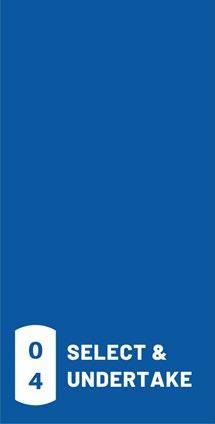
project. The FutureTREC innovation portfolio consists of core, adjacent and transformational initiatives 9 and includes a range of ideas that span from building on core competencies, to those that require entry into new areas, to transformational opportunities that require exploring by leaps. The common denominator is they all have the potential to accelerate TREC's vision of community economic resilience.
Feedback on the foresight and design process from participants highlighted their appreciation of: Context-driven future scenarios that were hyper- local, with people at the forefront; The systems design approach, which mapped the complexity and interrelationships of possible innovation strategies, helping participants to better understand the dynamics of change – including unintended outcomes – and create insights allowing for solutions that better support authentically SDGs; The emphasis on enabling knowledge generation and skill-building by participants throughout the process. By developing an understanding, appreciation, and comfort for the uncertain nature of futuring work and the ambiguity of possibility, participants felt they were better equipped to continue to iterate and build upon their visions of sustainability.
22 Touchpoint 12-3
Fig. 5: Phase Four: Select and Undertake8
What we learned as designers
As researchers, designers and practitioners of strategic foresight for sustainability, our impact will arguably only be as strong as our ability to engage organisations that want to discover transformative innovations, and to provide meaningful experiences that generate exciting and actionable results.
The TREC project put this premise to the test. Execution matters. As we reflected on our strategic foresight experience from the perspective of process designers, we explored what aspects not only broke down barriers towards transformative change but were core to the service design approach. Here we share the values that supported our research and sense-making process. They act as guideposts when designing and executing strategic foresight processes for transformative sustainability.
1. The process is collaborative: While collaboration is so deeply embedded in service design work as to be assumed, our experience highlighted how designing in pervasive collaboration for sustainability solutions opens space for participants to co-create new positive visions for the future while reframing individualistic or competitive approaches to solution-making. The collaborative space and process also supports moving beyond incremental change mindset to leverage collective creativity. The process encouraged participants to re-think current systems of doing and making at a time when large-scale transition and alternative sustainability solutions are pressingly needed. The collaborative approach may also address the growing incidence of climate anxiety at the individual level through enabling, collective solutioning.
2. The process empowers intersectionality: It’s often the most vulnerable people who are excluded from the decision-making table. As designers, we grounded this experience in the needs of the community by opening space for a diversity of participants, perspectives and voices, and extended the inclusive and equitable approach when developing future actors, scenarios and solutions. Actively and consistently practicing Design Thinking helped unearth unmet needs, driving creative and unexpected solutions that authentically solve real problems at the human and community level.
3. The process helps to rewire systems: Focusing on product-service innovation restores individual and collective agency and moves away from an over-reliance on breakthrough technology to solve social and ecological challenges. By focusing on new ways of doing and making, we can accelerate the shift to a circular economic model that helps refocus local economic growth from the consumption of finite world resources.
All (designer) hands on deck
The conversation and action around sustainability is evolving quickly. In the summer of 2021, the United Nations’ IPCC (Intergovernmental Panel on Climate Change) landmark report by the world’s top climate scientists showed that Earth’s climate is warming at a faster rate than previously thought, forecasting greater and more widespread consequences for society and the planet10 . The new urgency spurs individuals and organisations to rethink their existing models and incrementalism overall. As designers, the FutureTREC project gave us confidence that inclusive, agile models of research coupled with collaborative foresight tools can deliver valuable, actionable and authentic insights into ways in which organisations might strategically steer the transition to more sustainable solutions. We encourage other designers to explore service design and strategic foresight as frameworks for building disruptive and transformative approaches to sustainability, to build the future you desire and the future we need.
Touchpoint 12-3 23 service design with the planet in mind
10 IPCC (2021). Climate Change 2021: The Physical Science Basis [report] accessed at https://www.ipcc.ch/report/ar6/wg1/downloads/ report/IPCC_AR6_WGI_Full_Report.pdf

Sharina Khan is a Senior Experience Design Consultant at Thoughtworks. Sharina is currently working with multiple stakeholders and agencies from the public sector in Singapore on a highly complex case management system to get a clearer picture of pain points, stream line business processes and deliver maximum value to both clients and end users.
Emulating Natural Ecosystems in Service Design
Introducing the Macro Service Mapping method
What relationship do UX, CX, service design and systems design share? Like our natural ecosystem, they all exist from the microscopic levels of an individual to the complex ecosystems we interact with.
The omnichannel1 service complexities of today can be addressed by understanding the interactions that occur between the layers they share, from the individual to the larger systems that impact their experiences in the end. Starbucks, Nike and Disney are examples of companies that have mastered this. Taking Starbucks as an example, a customer may visit one of their coffee shops after seeing, hearing or reading about it through a physical or digital medium. That customer then orders in store, pays, and gets the full Starbucks experience, including the associated aromas and personalised greeting. Afterward, they may be tempted to sign up for a Starbucks newsletter for in-store discounts, and once they have used a few of these, they will be invited to join Starbucks Rewards for even more savings and easier payments, thereby becoming a digitally registered customer (Wallace, T. 2020).
“We have to think of [digitally registered customers] as the top of the funnel; an enabler of the relationships that we can create that lead people eventually into the Starbucks Rewards Program.”
Matthew Ryan, Executive Vice President & Global Chief Strategy Officer, Starbucks
Macro Service Mapping method
This article will discuss the symbiotic relationship between UX, CX, service design and systems design, with the aim of providing a systematic framework for designers and non-designers using the ‘Macro Service Mapping’ method. In this method, customers are guided through interactive workshops to reduce the complexities and interdependencies between various omnichannel services into easily digestible tasks and processes. Mapping
24 Touchpoint 12-3
1 Omnichannel is an approach to providing a consistent and connected customer experience across multiple touchpoints.
this process visually gives stakeholders a better understanding of the people and the props involved in a specific process. By examining these maps in concert, stakeholders can focus on possible intervention areas.
This method helps to determine: (1) How to approach problems in a customer-centric manner, (2) Map any micro-interactions such as physical and digital that occur between the groups to identify their dependencies, and (3) Prioritise ideas based on the value to the user, business and environment. The case study will elaborate on this method in more detail.
The three key components of service design processes, props and people will be examined here. The intent is to demonstrate the resemblance of these three components across UX, CX and systems design.
Processes – Reviewing and streamlining processes to eliminate unnecessary steps and actions and potentially automating mundane tasks
Props – Reducing clutter, data management and optimisation
People – Identify all across the actions to explore how we could improve their experience
Relationship between natural ecosystems and service design
We can draw parallels between service design and a natural ecosystem, where living and non-living organisms interact in communities, including through chemical, physical, and biological interactions, in harmony.
There are four major components in natural ecosystems: biotic components, abiotic components, energy flow and cycling nutrients. Likewise, in service design, these elements can also be expressed as process, props and people. Biotic components are any organisms living in a community such as plants, animals or microorganisms, which can be viewed as the people involved in the whole omnichannel service process. The abiotic components of an ecosystem include the non-living things that are essential to living organisms, such as soil, air, water, rocks, temperature, and sunlight, which are also viewed as the props that people interact
with throughout a service. The process in a service is analogous to the flow of energy and cycling of nutrients in a natural ecosystem, which describes the steps and interdependencies of abiotic and biotic elements.
Deconstructing, UX, CX, service design and systems design
The way natural ecosystems coexist in harmony illustrates the importance of analysing each layer of customer experience, user experience, service design and systems design and understanding how they all work together in order to create exceptional omnichannel experiences.
Apart from service design, props, process and people are also evident in CX, UX and systems design. As you can see in the adjacent diagram, we start with the underlying level, which is a collection of individual and grouped user actions, which we map to reveal the props and people they interact with and the emotions they manifest. Here is where UX comes into play. User experience encompasses all aspects of the end user’s interaction with the company, its services and its products.”2
1 Norman and Nielsen, 2011 CX
Relationship between CX, service design, systems design and UX Touchpoint 12-3 25 service design with the planet in mind
Brand actions
Support process actions
Employee actions
User actions
Systems
Services
UX
Define task here
Positive emotions
Emotions




Negative emotions
Task: People Props






Process
On the second layer, there's service, which consists of physical and digital touchpoints that exist both on-stage and behind the scenes, mainly relating to employee actions.
Thirdly, there is the system layer, which includes all support processes within an organisation, including internal systems and external ones, as well as how people interact with these systems, which are also known as props.
The top of the stack is customer experience, which is the sum of all interactions and experiences customers have with a company, ensuring a seamless, engaging relationship with the brand as a whole. Furthermore, the props people and processes in this layer are evident across the multitude of channels over which the brand is engaged, and thus, they all need to be consistent to provide a high quality customer experience.
The case study outlined below will provide a preliminary translation of this theory into practice.
Service design workshop case study
This half-day workshop was conducted with eight participants (non-designers) as part of the ‘Making Ideas Tangible’ module at the Singapore Institute of Technology (SIT). For this activity, participants were


Physical touchpoint
Digital touchpoint
Internal systems
External systems
Macro Service Mapping method
divided into groups of three to experience a McDonald's meal in a different way. Three tasks were assigned to the students to provide an array of different touchpoints based on the experience they had with the service.
The three tasks assigned were:
1. Pick up food at McDonald's using an external food delivery app
2. Dine at McDonald’s by ordering food from the kiosk
3. Take away food from McDonald's by ordering from the counter
The Macro Service Mapping Method was then introduced in five steps to participants.
1. Choose the task (each group is given a specific task here)
2. Make use of Lego blocks and figurines to map out the actual journey
3. Use high and low curves to convey emotions
4. Identify digital and physical touchpoints and artefacts
5. Identify the internal and external systems in the journey
26 Touchpoint 12-3
Their initial step was to outline the journey for their given scenarios using the Lego blocks and figurines provided, as illustrated in Figure 2. This helped to ease their mapping process by enabling them to visualise relationships and identify micro-interactions that exist between the various components of their service providers, the props, people and process. In addition, they had to specify the type of touchpoint: either digital or physical. When it comes to digital touchpoints, they need to identify whether it is an internal or external system. The term ‘external system’ would imply one which is not produced by McDonalds, for example, by a company who supports McDonalds’ services.
They also had to include the lows and highs of the entire journey, from positive to negative experiences. Utilising the ‘five whys’ method, the groups explored the pain points associated with the lowest point of their journey, allowing them to further understand the root cause of the issue. The same method was used to examine the peak of their journey in order to understand what contributed to their happiness. This initial mapping is illustrated in the associated figure.
For the first group, they identified McDonald's pickup as the most frustrating part of the process because the distance displayed on the map does not adequately represent how certain routes can be taken, such as walking, taking the bus, or cycling, which tended to be their preferred means of transportation for pick-up orders.
The distance from their home to the pick-up location was the only information provided. It would be more useful to know how long it will take them to get to their destination by different means of transportation. Having this information could have helped them decide which shops to purchase food at. Because of the lack of clarity in this information, they might be discouraged from picking up future food orders on their own, which could reduce the need for motorbikes or cars for deliveries and thus reduce carbon emissions.
This led them to craft their opportunity statement: “How can order pick-ups be made more transparent in terms of the quickest and greenest routes?”
The second group evaluated ordering via kiosks and identified their biggest pain point as having too many choices on the menu, and therefore taking a long time to decide what to order. Thus, they slowed-down the queue and delayed orders for other customers. That group formulated their opportunity statement as follows: “How can we speed up the ordering process in-store?”
In the final group, the spatial configuration was examined, because they needed to place orders in-store and take their food home. During the investigation, they found too many people within the interior space, affecting the safe distancing measures put into place due to Covid-19. Their opportunity statement was as follows: “To ensure compliance with the Covid-19 regulations, how can the store's interior and exterior space be optimised?”

Outcomes from three groups Touchpoint 12-3 27 service design with the planet in mind
Benefits of Macro Service Mapping method
By providing participants with a tangible representation of the services, they were better able to understand how the process, people and props interconnect, leading them to look at services they interact with from a macro perspective.
The mapping of micro-interactions also enabled them to grasp the dependencies between physical and digital touchpoints. From this perspective, they got an understanding of how macro interactions exist between internal and external systems.
The Macro Service Mapping method allows different users along the journey, together with service providers and stakeholders, to collectively map out the micro-interactions quickly and see connections between them clearly.
From the feedback shared by participants during the workshop, they found this method to be more effective for helping them understand the concept of service blueprinting.
Additionally, this method was later applied through a remote workshop with design students to enhance the understanding of the interconnectedness of processes, props and people in a service (see associated diagram).
Visually mapping out a journey, either in person or in a remote workshop session, can serve as a macro blueprint for aligning and communicating between all parties in the service journey. As a result of breaking down processes into manageable functions and associating them with various people and objects, businesses can analyse specific processes in greater depth without losing sight of the overall picture.
This method is particularly useful for early stages of the review of an omnichannel service. It can be employed in an open workshop setting where endusers are able to participate and map out a preliminary framework overview so that other stakeholders can comprehend what is actually happening on the
Macro Service Mapping method (remote session) 28 Touchpoint 12-3
Digital prop Physical prop Process People 3 People 2 People 1 Step Step Step Step Step List Step List Step List Step List Define Task Before Time Time Emotions Time Time Time Time Time Time Time Time During After
ground. This light-hearted and digestible method will also be easier for end users to engage in.
In an ecosystem, every factor impacts the other factors either directly or indirectly. For example, a temperature change in an ecosystem will affect the plant species that will grow there. Plant-dependent animals will have to adapt to the changes, move to another ecosystem, or perish. Similarly, how a consumer interacts with any touchpoint throughout his or her journey impacts their decision to continue utilising the service or move on to another. Because of this, it is essential to illustrate these interactions, just as we understand natural ecosystems through graphs and visual representations, such as photosynthesis. In a similar way to how natural ecosystems coexist in harmony, omnichannel services can be visualised with the same approach to identify micro interactions that need fixing, to ensure they can work properly in harmony.
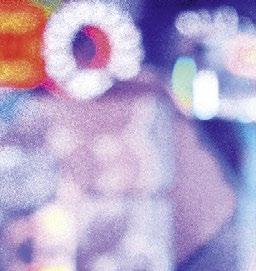





Designing a brighter future.
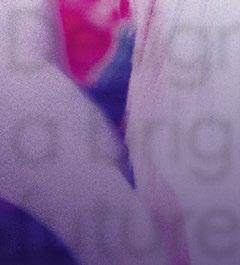


We’re strategists, designers, and advisors focused on people, above all else.

Slalom’s global experience strategy and design teams are driven to help organizations realize their vision. We leave clients stronger after every engagement, foster trust for the next big challenge, and build a brighter future together.

Touchpoint 12-3 29
Step 1 Step 3 Step 5 Step 7 Step 8 + List down digital prop Step 6 + List down digital prop Step 4 + List down digital prop Step 2 + List down digital prop Time strategy | technology | business transformation Learn more at slalom.com

Mirja Kälviäinen is a Principal Lecturer of MA studies in Design Thinking at the Institute of Design, LAB University of Applied Sciences, Finland. Her recent research and development interests have focused on Design Thinking, user-driven innovation and service design applied especially to environmentally and socially sustainable solutions.
Service Design Tools for Sustainable Behaviour Change
Many tools for sustainable behaviour change exist to help design services in the transition towards sustainable lifestyles. These tools provide guidance on how to create support for the drivers to motivate change, for customers to understand and learn what to do, and how to sustain new consumption habits.
Consumption change is required
The question of environmental sustainability has been linked for decades to the consequences of – and necessary changes in – production systems. In developed societies, the reality and the main cause of environmental damage lies in excess consumption. The sustainability challenge is not only to redesign production systems, but to push people to change their behaviour to new consumption activities alongside those changes. With all the various innovations in technology and envisioned transformations in economic system solutions such as circular, doughnut or regenerative economies, and even de-growth models, there exists the interconnected question of how to transform consumption behaviour accordingly. This is a vital task for service designers to support through co-designing, because typically few other experts within the sustainable economy are tackling the socially- and culturallybound solution-people interactions.
The decrease in the environmental impact of daily consumption should be as much as 70% to even 90% of current figures in Western societies, and this could influence the emerging consumption habits in developing countries as well. Despite research which uncovered positive consumer attitudes towards environmentally conscious lifestyles, actual behaviour typically does not represent these attitudes. Instead, one typically finds an attitude-behaviour gap, which includes everyday barriers and a lack of drivers for sustainable behaviour.
Barriers and drivers for sustainable consumption
Barriers for sustainable consumption include pressures related to lack of time, knowledge, various non-green, everyday-related criteria, and expensive prices. The media offer complex and contradictory information, the search for solutions is complex, and it all triggers feelings of doubt. Because society tends to support unsustainable
30 Touchpoint 12-3
















The motivational, opportunity and capability factors (COM-B) for behaviour change should be integrated in the sustainable behaviour change customer journey
consumption, green consumption is associated with significant efforts being made by truly devoted, fanatical people. For typical consumers, sustainable living seems difficult and dull.
Everyday habits are hard to break. The rational choice model does not explain or promote social, cultural and psychological motives. Everyday consumer drivers follow strong self-interests: Health, wellbeing, identity, capabilities, freedom, safety, trust, family bonds and pressure from established socialcultural norms from network values are typically stronger than altruistic, ‘save the world’ motives.
As Lucy Shea from Futerra explained in the Brands for Good webinar in September 2020, the ‘Pioneers, Big World’ people with a ‘change the world’ perspective are few. ‘Energisers and Prospects, Me’ people who appreciate health and status, or realistic ‘Settlers or Fixers’ with a small-world perspective who appreciate home and family are more common. For all those who are not enthusiastic to ‘save the world’, things should be made easy. Close relationships with others and identity-building through social acceptance is important. Consumers need quick feedback and ways of making the negative environmental impact and the results of doing visible, concrete and local.
Comprehensive models for behaviour change
User research in Finland for what would impress and help people in environmentally-positive behaviour showed a necessity to provide them with supportive processes. Service design offers a process-based framework that can be co-designed by necessary sustainability and behavioural expertise to integrate with consumers’ everyday interests and activities, so that sustainable behaviour is smoothly embedded into their daily lives, which contain multiple demands and activities.1
Service design also includes contextual research techniques which take different user groups and local circumstances into consideration. The psychologybased explanations of behaviour change similarly point to the necessity of a process for change in which awareness and interest is triggered, and new habits are learned and eventually maintained.
The customer journey can be made to match the required psychological factors in behaviour change. The COM-B model is based on a wide meta-analysis and depicts simultaneous effects of user capabilities, contextual opportunities and motivation in the change
Kälviäinen,
COM-B factors need to be findable in the process Capabilities Motivation Opportunity Personal interests Understandable transparent information Social interaction and norms support Easy to find information Personal interests FINDING CHOICES LOW IMPACT USE AND SHARING REUSE Findability Accessibility Positive image support Easy or familiar use Positive feedback, visible results Findability Accessibility BEFORE DURING AFTER
Touchpoint 12-3 31 service design with the planet in mind
1
M. (2019). Green Design as Service Design. In: Miettinen, S. & Sarantou, M. (Eds,). Managing Complexity and Creating Innovation through Design, Routledge, 100-113.
required. 2 For service design purposes, it is useful to change the order of these factors and make sure that the motivational drivers and information understanding come first, and then provide contextual opportunities and ensure ease of use or learning support along the process.
The SHIFT framework for successful sustainable change factors, acquired through another meta-analysis, describes the factors of social influence, habit formation, identity matching, feelings, cognition and tangibility that have proved useful in succesful solutions for sustainable change. 3 These factors cover the difficult question of social-cultural influence. It is important to consider social norms and influencers or to strive for building desirable identities when designing and personalising the service style and service moments to different consumer segments. Breaking and learning new habits can be supported with consideration for positive feelings, guidance and ease of use, and by making information, behaviour cues and results concrete and understandable.
Behaviour change interventions
The practical guidance for a further specification of the customer journey as service moments and touchpoints with guidance, nudges and prompts exists also in the form of several behaviour design tools such as persuasive and change-promoting ideation cards. 4 These kinds of ideation tools are based on psychological findings about how we as human beings tend to use quick and easy heuristics from the past with emotionally or otherwise biased thinking when we make quick and intuitive decisions and behave unconsciously in everyday life.
2 Michie, S., Atkins, L., & West, R. (2014). The Behaviour Change Wheel. A Guide to Designing Interventions. Silverback Publishing.
3 White, K. & Habib, R., (2018). SHIFT - A review and framework for encouraging ecologically sustainable consumer behaviour. Sitra Studies 132. Sitra. [Online] Retrieved April 4, 2021, from https://www.sitra.fi/julkaisut/shift/
4 E.g. Bridgeable. 2018. Designing for Behaviour Change Toolkit. [Online] Retrieved June 20, 2021, from https://toolkit.bridgeable. com/.; Lockton, D. (2018). Design, behaviour change and the Design with Intent toolkit. In: Niedderer, K., Clune, S. & Ludden G. (Eds.). Design for Behaviour Change. Theories and Practices of Designing for Change, Routledge, 58-73.
Behavioural and cognitive psychology takes this biased quick thinking into consideration and provides mechanisms and patterns that help to direct our behaviour with behaviour change interventions. Psychology talks about interventions when it points to psychological, pattern-based interactions that persuade users towards behaviour change. In service design, these interventions can be embedded in service moments or in smaller touchpoints.
For the use of the interventions, it is worthwhile to notice that some of the behaviour patterns are suitable for the initial drivers, awareness and motivation phases of the process, while others are relevant for the adapting and learning-to-use phases. Some point to commitments and sustaining the habit for a longer period. Examples of first-hand drivers can be framing and anchoring the deeds to customer interests or offering small, tasty bites to try.
It is also advisable to ask to make changes alongside other major changes. In adaptation, consumers should be able to follow the impact of their actions and see and understand the results as something familiar. Information should be simply grouped and sharing it provides social support. Sustaining can be supported by constant feedback and rewards from the system. It could be visible how other people are doing the same. The results can be shown off socially, or others can provide feedback. There can be competitions with your own skill level or against others. New features can provide rewards and the joy of learning or competing. Personification possibilities will support commitment.
Behaviour change design in practice
Consumer lifestyle change requirements for low environmental impact use and management relate to housing solutions, energy and water use, low impact mobility, food and products, and services and their use. A practical business example comes from the consumer waste management field. When asking the question of how to help residents in efficient waste sorting, it is important to note that a realistic journey requires several public-private stakeholders to collaborate in providing the necessary process. The journey of supporting waste
32 Touchpoint 12-3
sorting in apartment buildings includes major homebased activities and is connected to purchasing decisions. It includes sorting and storing the waste with adequate understanding and know-how, carrying it to the joint collection points and depositing it correctly.
Try it yourself
Required sustainable change should not only happen in production systems, but also on an individual level. Many actions, such as waste management, need to be carried out locally and by individual consumers for the new sustainable economies to work. For their implementation and execution, the
abstract scenarios, calculations and technologies of these economies require service designers to create situated, citizen-driven behaviour change solutions.
Together with contextual user understanding, the mechanisms of social-cultural and psychological behaviour interventions provide powerful tools to accelerate solution creation for the necessary change towards more sustainable lifestyles. My research, observations and analysis comparing and applying behaviour change factors and patterns to sustainable behaviour change cases confirm that at least the tools presented here are practical and efficient in change creation. I hope you will try them too.
The following suggestions exemplify how the different phases of waste management in apartment buildings can be supported with ideas deriving from the design tools described in this article
Learning gradually what and how to purchase to avoid waste and to produce only sensibly recyclable waste
Shopping
House Internet channel as part of the city channel: Famous influences showing examples of waste reduction, composting and basic sorting. Harm to health info of untreated waste.
Social idea sharing and commenting possibility how to avoid food waste, how to re-use waste materials at home.
Social sharing of waste food and other usable stu locally

Sorting bins and bags are o e red for di e rent waste on behalf of the house: Size and form point to specifi c waste and restrict the amount, can be used as benches or other furniture since space is scarce, smell decreasing function, bins work also as bags.

Basic information shared in the house channel and as paper versions every half a year: How sorted waste is cheaper for the residents as expense, how waste is used for new products (x = y) and how much and what it saves as fresh raw-materials, energy and water . Basic sorting rules easy to find on the channel and on paper leaflets, special guidance and personal guide for new residents and info campaigns for all when there are changes in waste management system of the house.


Guidance boards for basic sorting to attach beside home sorting area, tags with concrete symbols to attach to sorting bins and same symbols at the joint house containers to minimise cognitive load.



Quick emptying when containers are full, waste sorting competitions and prizes for the residents and for your own development, weight measured at the collection point, special deliveries of waste sorting of dangerous and exceptional waste, possibility to o e r usable items to other residents, joint cleaning days. Concrete simulation information at the house channel about the city waste management system and how the waste is treated and re-used.

Containers: having sensors for alerting to empty the container when full, calculating weights of bags for competitions, containers saying thanks for low weight bags, hygiene solutions (foot pedals and hand wash). Using

At the joint house collection point: Guidance boards for basic sorting, similar tags as for homes with concrete symbols of sorting and size and form of containers pointing to specific waste.

at home
and storing waste at home
to joint collection
Sorting
Delivering
Touchpoint 12-3 33 service design with the planet in mind

Florie Bugeaud-Remond is a service designer, circular catalyst and founder of beewö, a French organisation dedicated to the design of eco-responsible services. Florie defended the first PhD devoted to Services Science in France in 2011. After 12 years dedicated to service design in various contexts, she now works to raise awareness of ecodesign in the field of services and help companies align their services strategy and design with their values and those of their customers.
Combining Service Design, Eco-Design and Circular Design
Towards a ‘planet in mind’ service design redirection
Services represent a large part of human activity and its resultant environmental impacts. However, this dimension is still little addressed by our practice, despite it being a multidimensional and holistic approach. Our planet needs us. Adding just one more dimension is not enough. Environmental impacts must be the foundation of the entire approach. Eco-design and circular design introduce interesting mindsets and tools to work in this direction.
Eco-design, circular design and service design: A comparison Eco-design is a method from the 1990s with its roots in engineering, and aims to reduce the environmental impacts of products, services and buildings throughout their life cycle.1 Circular design was more recently born from the application of Design Thinking to the circular economy. 2 Service design, eco-design and circular design are all systemic. Service design and circular design are born from the same
1 Brezet J.C., Van Hemel C. (1997). Eco-design-A promising approach to sustainable production and consumption. UNEP.
2 Circular Design Guide, IDEO and The Elen MacArthur Foundation: https://www.circulardesignguide.com/
philosophy. They are both holistic, human-centred and collaborative, but circular design applies the planet needs and priorities in the same way as human needs and priorities by promoting the avoidance or reuse of waste, sharing and multiplying local synergies, and regenerating biological ecosystems. Environmental concerns have not been discussed very much in service design until recently. For instance, to design a hotel reservation and reception service, our work touches various dimensions:
Physical and digital – e.g. website, reception area furniture
Functional and technical – e.g. booking management tool, server performance
Emotional – e.g. reception decoration, personalised gestures
34 Touchpoint 12-3
Feasible
Social – e.g. greetings by and interactions with staff, creation of a community
Economical – e.g. price for customers, cost for the hotel
Because service design is naturally multidimensional, it may seem easy to add an environmental dimension to those above. For example, many hotels no longer change towels during a stay, or set up lighting systems that turn off when the customer is no longer in his or her room. But do these considerations alone make the service fully eco-responsible?
In eco-design and circular design, services are ony partially eco-designed because they are often reduced to a material perspective based on one of their tangible or digital touchpoints. However, a service is not just an artefact; it is the arrangement born from the interactions of heterogeneous parts that form a whole within a given space-time. 3 Services emerge from a multidimensional dynamic which can have a significant environmental impact.
Currently, it is the designer’s personal sensitivity to planetary issues that guides design choices, or not. Some of us have already started to integrate the UN Sustainable Development Goals 4,5 , into our work. The whole, the parts, their connections, and each dimension involved in the service must be viewed with the planet in mind.
What would it mean to take the environment into consideration in the hotel services example? To answer this question, we must consider the system surrounding the user and strongly integrate the environmental dimension into all our basic models. Eco-design and circular design place sustainability at the heart of their approaches, methods and tools. They provide us key insights to refocus service design and take part in the challenge of our time.
3 Bugeaud F., 2011. Pour une ingénierie des systèmes de services à base de méréologie et d'hypergraphes. PhD Thesis
4 https://sustainabledevelopment.un.org/sdgs
5 Chen Yushi and Arbelaez Llano Sara Lucia, 2020. The Future of Service Design. Service Design and Sustainability, KISD
Touchpoint 12-3 35 service design with the planet in mind
< Desirable (people) Desirable (people) Circular (nature) The Human Centred Design Trinity The Circular Design Innovation Model (based on Circulab, 2018)7 Smart Design Innovation Feasible (technology) Viable (business) Feasible Viable (business) Sustainable (alldimensionsmustbe
Viable (economic growth environmental performance) Circular (avoiding waste and pollution regenerating natural ecosystems) Desirable (behaviour preferences and commitments of users and customers)
environmentallycompatible)
partnerships) EcoResponsible Design materials and tools, hand-in-hand with (technology)
(eco-designed responsible
Fig. 1: From the design three lenses to the eco-responsible design diagram
A dimension to transverse all others
The well-known trinity of the human-centred design approaches gives a basic overview of the design factors for innovation: Services should be desirable, useful and usable. They also should be findable, accessible, credible and valuable. However, services can appeal to feelings and emotions, to needs and problem-solving, to understanding and performance. They can also be viable from a business perspective. But despite meeting those criteria, they may still not be eco-friendly or sustainable at all!
Design Thinking considers the needs of humans, but fails to address the needs and the limits of our planet. Moreover, some services that were once economically viable may no longer be so in light of the growing sustainability concerns and expectations of customers and users. A hotel reservation service can be useful, usable and desirable thanks to a very functional, readable and pleasant website, and to a very accessible and attentive switchboard operator and the presence of attractive prices. But have we checked the environmental impact of the website and its hosting? Did we offer eco-responsible options to users? Have we checked the ethical and ecoresponsible management and organisation of the call center? Where did the decoration and furniture come from, and how were they designed and transported?
IDEO and the Ellen MacArthur foundation have developed the Circular Design Guide6 combining Design Thinking and the circular economy. Even if it is not specific to services, the circular design approach brings us interesting insights. Among these, Justine Laurent 7 evokes the evolution of the well-known model of ‘desirable, feasible, viable’ to integrate a sphere dedicated to circularity: “By adding a fourth sphere, one representing the circular nature of design and including the notions of resources, ecosystems,
biomimetics, coupled with the Design Thinking frame of reference, circular design automatically opens up new possibilities for discovery and new economic, social and environmental opportunities”.7
As service designers, we must start to design or redesign services with and for the whole living system of our planet, not just with and for humans. As Prof. Birgit Mager recently pointed out in The Future of Service Design: “Our natural ecosystem deserves a seat at the stakeholder table — just as much as business and social aspects”. 8
To go further, we must adopt the circular factor (we could also add ethics) and study all the service dimensions regarding the environment (see Fig.1).
Only then will we be able to find and design the best compromise between human needs, technological ability, economic performance and environmental resilience to the benefit of current and future generations.
The service life cycle as a basic foundation
Eco-design and circular design approaches are founded on a similar product or service life cycle analysis: design, raw material extraction, manufacturing, distribution, use, repair, and end of life (reuse or recycle). This circular (as opposed to linear) vision is inspiring.
It is well known now that 80 percent of the impacts of products and services can be considered during the design phase. The modelling and analysis of a service’s life cycle could save us from design choices that would have a strong impact on all the next steps (and not just the service use). However, existing models are not completely suitable for describing and analysing that service life cycle.
Some product life cycle and environmental assessment experts 9 have detected shortcomings and inconsistencies, particularly within the context of ‘pure’
7 Justine Laurent – Circulab, https://circulab.com/circular-design-what-is-it/
9 Pôle Eco-Conception,
https://www.eco-conception.fr/static/eco-conception-service.html
36 Touchpoint 12-3
6 Circular Design Guide, IDEO and The Ellen MacArthur Foundation, https://www.circulardesignguide.com/
8 Mager Birgit, 2020. The Future of Service Design, KISD – Köln International School of Design.
2020.
services such as those offered in finance, education or health. We therefore propose to use a dedicated life cycle (see Fig. 2) highlighting the specific and more intangible stages of a service, making it possible to zoom in on possible underlying product life cycles.
For instance, the life cycle of a bottle of shampoo provided by a hotel would describe the following: The bottle design, its manufacturing from raw material extraction, the delivery to the hotel, its usage by a customer, and finally its return to the manufacturer for reuse or its recycling. The life cycle of a full stay at the hotel would similarly encompass the following:
1. Design
2. Industrialisation – e.g. investment in capital goods, purchase of first consumables such as bottles of shampoo, development of the website, production of physical touchpoint such as the room service menu
3. Launch and promotion – e.g. creation of physical and digital media such as online advertisements or flyers
4. Usage – e.g. customers’ experiences and coproduction with the hotel staff who manages its delivery, logistics
5. Improvement – e.g. response to a new customer request, repair of something that does not work in the room
6. Ends – e.g. necessity of putting an end to the service relationship, managing the end of life of consum ables (reuse, recycling), customer data management (conservation, removal)
Keeping those in mind, we would be able to design this service with staff-adapted training, service options based on customers’ sensitivity to environmental issues, short and local loop supply for consumables, material reuse or recycling, and more.
Service closing New service experience Eco-responsible strategy and design Service Service life cycle industrialisation Commercial launch and match-making Co-production / service experience Service improvment End-of-life management Service concept major evolution Touchpoint 12-3 37 service design with the planet in mind
Fig. 2: A service life cycle proposal
Human-centred
- Understand the context, users needs and current usage
- Study the market
- Develop insights and hypothesis
Initial question or idea
- Question and explore the environmental dimension of the initial question or idea
Diverging Service concept and challenge
- Perform an environmental assesment of the current service (if existing) and analyse the main impacts
Planet-centred
Converging
- Define and describe personas
- Define the design challenge
- Engage stakeholders
- Plan the rest of the project
- Map the stakeholders’ preferences and engagements
- Define the service concept and its environmental challenge
A ‘planet in mind’ double diamond
The ‘Double Diamond’ design process from the British Design Council is human-centred, collaborative, co-creative and iterative. The maturity level in understanding and doing design has been greatly increased thanks to this model. However, it is now quite obsolete, or at least incomplete. The Design Council have been promoting design for change recently. Even if they mainly have a product orientation, they bring very interesting elements, especially a study of the barriers to change and a new framework for systemic design including inclusion, circularity and regeneration.10
There is little work in this direction in service design, but we can quote the very recent ECO-SD 11 method which proposes four stages:
10 Sierra-Pérez J., Grenha Teixeira J., Romero-Piqueras C., Patricio L., 2021. Designing sustainable services with the ECO-Service Design method: Bridging user experience with environmental performance, Journal of Cleaner Production, Volume 305
11 Sierra-Pérez J., Grenha Teixeira J., Romero-Piqueras C., Patricio L., 2021. Designing sustainable services with the ECO-Service Design method: Bridging user experience with environmental performance, Journal of Cleaner Production, Volume 305
- Generate and test end-to-end scenarios and prototypes (desirable, useful, usable)
- Imagine a viable business model
- Scenarios and prototypes are also circular and sustainable
- Understand and map each environment issue thoughout the service lifecycle
- Perform an environmental assesment of the under-design service
- Imagine a globally responsible business model
- Finalise and perform last tests
- Establish recommendations for the service implementation and launch
- Collect and process feedback
- Finalise the service prototype against the assesment result
- Finalise an adapted business model
- Establish multidimensional recommendations for the next life cycle phase (possible eco-responsible partnerships, eco-designed technical, physical and digital solutions, etc.)
Service exploration – to understand the service context and how users interact with it
Service visualisation – to visually identify the barriers to environmental performance and user experience during service provision
Service ideation – to conceptualise a new service that overcomes the identified barriers
Service assessment – to understand the changes in environmental sustainability and user experience of the newly-designed service”9
There are very good proposals in this method, which has already been applied to concrete use cases. We can go even further, especially through the life cycle perspective. Figure 3 summarises very succinctly the current human-centred approach and suggests the addition of a more planet-centric approach inspired by eco-design and circular design.
The eco-responsible design Venn diagram (see Fig. 1) should be constantly present throughout the design process to help us question the context, concept, scenarios, prototypes and business models in order to strike the right balance between
Validated service
Deliver Develop Define Discover
38 Touchpoint 12-3
Fig. 3: A double-diamond evolution proposal
desirability, feasibility, circularity, viability and the overall sustainability prism.
The service value proposition should bring value to customers/users, as well as to the environment, by protecting or regenerating it. For instance, ‘a warm welcome to allow a vacationer to begin a restful hotel stay’ would become ‘a warm and tailor-made welcome with a staff committed to the customers’ side to make his stay as restful and as impact-free as possible’. Moreover, the service life cycle should be defined and measured at three steps:
Discovery phase – life cycle of the existing service (if there is one)
Development phase – life cycle of the service as imagined and tested through different scenarios
Delivery phase – life cycle of the validated service before its industrialisation
In addition to a qualitative and functional analysis, it is necessary to perform a more quantitative analysis of the environmental impacts.12 To measure these impacts at these different stages, we would work with eco-design engineers to perform environmental assessments which help to identify and understand the environmental problems caused by an existing or potential service, and to compare the redesigned service with the reference one. We constantly have to zoom in and out between the whole and the parts, but also between the human and the planet perspectives.
It is not possible to describe here all the methods and tools of eco-design and circular design. We have a lot to share, such as our different ways of describing the service’s main function, mapping the stakeholders (based on life cycle and localities), mapping the interconnections of its components (living or not), and analysing feedback loops.
In conclusion
Prof. Birgit Mager recently wrote in The Future of Service Design: “The importance of service design is growing not only on the operational but also on the strategic level”.13 Let's take this opportunity to raise awareness, train people, and develop and deploy an approach that takes care of our planet. Service design is already human-centred, multidimensional and holistic. It is necessary to rethink the whole practice, and not only to refine it, by adding a new dimension to bring out a more ‘planet in mind’ approach. We must assume this challenge globally and act locally by designing services that meet only essential needs, using the most local and respectful solutions, as far as possible. The emergence of eco-responsible services will come from the orchestration of different expertise areas. Service designers, eco-design engineers and circular designers must share, update or create adapted methods and tools. Together, we will match the increasingly strong aspirations and commitments of customers and users, the ambitions and core values of companies and their employees, and we will act for the planet and for future generations.
Touchpoint 12-3 39 service design with the planet in mind
12 Vallet F. et al., 2013. Using eco-design tools: an overview of experts’ practice, Design Studies,Volume 34, Issue 3
13 Mager Birgit, 2020. The Future of Service Design, KISD – Köln International School of Design

Bruce Mau is the Co-Founder and CEO of Massive Change Network, a holistic design collaborative based in Chicago. Mau practices a lifecentered design approach to help his clients envision and articulate their purpose and future. Across thirty years of design innovation, he has collaborated with leading brands, companies, organisations, heads of state, entrepreneurs, renowned artists and fellow optimists to create positive change and strategic impact.
Prof. Birgit Mager is CoFounder and President of the International Service Design Network and editor in chief of Touchpoint, the international Journal of Service Design. Since 1995, Birgit Mager holds the first European professorship on "Service Design" at the University of Applied Sciences Cologne, Germany. She received the Sir Misha Black Award 2020 for distinguished services to design education.
Massive Change –Life-Centred Design
A chat with with Bruce Mau
Recently, Touchpoint publisher Prof. Birgit Mager sat down with design pioneer Bruce Mau to discuss his recent thinking about enterprise design, the significance of canoe-building and life-centred design.
Birgit: Bruce, you work across all silos of design and business. What made your approach so holistic?
Bruce: You know, it happened very organically. I think part of it has to do with not being educated. I only went to art school for a year and a half. So, I didn't really learn what the different disciplines were and what the boundaries were. I didn't know there were boundaries! I really fell in love with putting images and words together. And that turned out to be graphic design. So, I was called a graphic designer! Then clients started to ask me to do more and more. And to really start to design what they do and not just what they look like, so they would ask me to help them define their organisation, define their institution, their brand, their business. Sometimes it was triggered by a project to design what they look like and that engaged a set of questions about what they do, and then that became the real design project to help them do that.
In MAU: MC24 you claim that the task of the designer is not to solve the problem
that the client is offering us, but to question that problem.
Yeah, I like to say that almost every client I've worked with expresses the problem as a solution. They say, “we need a new logo”. Or, “we need a new flag”. What they're really saying is that they think the solution is a logo. And often in the process, we discover actually they may need a new logo, but the real problem is elsewhere or in some ways much more complex. The methodology we developed — we began to call it enterprise design — was to really think about designing the enterprise as a holistic entity.
When it comes to the design process –today everybody talks about Design Thinking and the ‘double diamond’. Do you have a specific process when you talk about enterprise design?
We have a process that we call the opportunity phase to think about designing the opportunity. In that first definition of work, you're really locking
40 Touchpoint 12-3

in on what you're going to do, but you're also locking out everything else. What I find often is that people lock in too early. They lock in before they really thought about what the biggest opportunity is. So, we have a method to help them define that and to help them to articulate it.
I really like the positive approach to that. Often, in the ‘discovery’, ‘research’, or ‘exploration’ phase, the focus is on problems. But you pin right down: It's about discovering opportunities, and that is, of course, much more optimistic and energetic.
Yeah, it works quite well. It actually comes from our work with a man named Marc Matthieu, who was the Head of Global Brand at Coca-Cola. He commissioned us to help design the sustainability platform for Coke. When we finished the project, I was having drinks with Marc and he said, “You know, the most important thing that you did? You didn't tell us about, you didn't say you were going to do it. You didn't charge us for it. I'm not sure
you even know that you did it.” “What is it?” I asked. He called it “branding the opportunity”. And he said, “What you were able to do was to define the opportunity in a way that inspired the entire team. Before you did that, we had one hundred and fifty people with one hundred and fifty directions. The moment you were able to walk into the room and to find the opportunity, everyone was suddenly pointing in the same direction.” And he said, “It's the most important thing and it's the reason we were successful.” After that, we realised we had to figure out how we were able to do that. Obviously, we knew how to do it, but we were not aware of it.
In MAU: MC24 this is the first of your strategies: to bring inspiration. And you also claim that this is how designers lead. Could you elaborate a little bit more on the designer as leader for change?
Well, what we realised was that hidden in the design process is a process of leadership. So we have a very
Touchpoint 12-3 41 service design with the planet in mind
Fig. 1: MC24 Principles
pragmatic process for design to define the problem, the context, the possible solutions, et cetera; you know, the kind of ‘necktie’ model. But in there, what you realise is that in design we have one of the few - and maybe the only - real methodology of leadership: Not just good advice, but really the ability to envision a future and systematically execute the vision . That's the best definition of leadership that I could find. And what we realised is that we have that power as designers to envision the future. We have that power, but we mostly don't realise it. We don't take responsibility for it. And we don't do it consciously. We don't really say, “My job is to inspire, because I can't make them do things”. Even if I know the right thing to do, I can't make them do it and I don't have control. So, I have to actually inspire them to do it. And therefore, we need to take inspiration as a methodology seriously.
That leads into an interesting direction. You say massive change is needed and there's so many problems out there. If I would challenge you to put the finger on the three most relevant topics for your work and for design, what would those be?
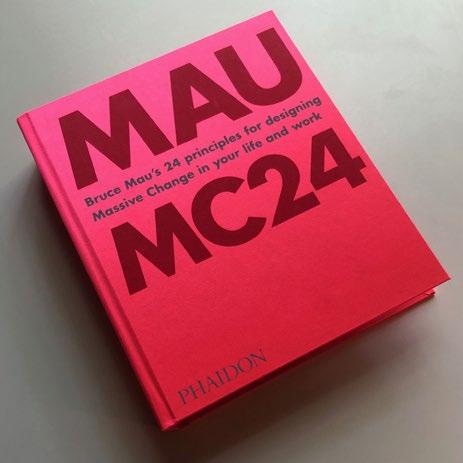
That's a big, big question. What we're seeing right now is what we call the crisis stack, which is multiple problems stacking on top of one another simultaneously, which we've never really had to deal with in the past. But when you take the kind of pandemic crisis, and you put on top of that a crisis of racial injustice, and on top of that, a crisis of climate, and on top of that, a crisis of governance, and on top of that, a crisis of food insecurity, you get to a new magnitude of challenge. You see, what's really happening is this new kind of layer cake of trouble that is an incredibly dense, simultaneous set of problems that are all interconnected. You can't unlock them. I mean, those five problems are the big ones that we're confronted with. And I think the most important thing that we have to develop is a methodology of synthesis in context. In other words, we need to understand the context of our work. And so much of design has been going the other direction. It's about taking the problem out of context so that we can solve it. And the problem with that is that we externalise the implications. We say, “This is the problem”, and we have the solution and we lock them together. And we just cut away anything that is problematic or unresolved. The fact that our solution destroys the environment is somebody else's problem.
Design really needs to lean towards systems thinking. Developing new methods in order to work with that complexity within systems is a big challenge for design.
It's why one of the MC24 principles is ‘Quantify and Visualise’. To be able to see what's going on and actually visualise what's happening, is again, where designers have an extraordinary power. We can take a spreadsheet which is only ever accessible to individuals, and make it into a visual that is socially accessible. We can make an image of the data that everyone can understand simultaneously, and that simultaneity of understanding is a really profound difference.
42 Touchpoint 12-3
I would like to talk about the economics of economics. You say if you can't put the accounting into your project, then you can't make the project happen. Could you elaborate?
Well, you know, if you work in the design department, you have no idea what projects are coming. But if you go down to the accounting department, they know exactly what's going to happen. Because they have a write-off schedule. They know when things are going to go into the trash. And they can predict how long things are going to last. What we realised is that - wow! - if we work with the accountants, we can actually change the frame of the project. We can change the scope and the perspective of the project definition. It comes from understanding that what you're really doing is investing. I mean, what designers do is they allocate resources, they decide, “I'm going to put more money on this, and less on that. I want to make this important, I want to reduce that, I don't want to use these kinds of materials because they're damaging to the environment. I want to have more money invested in better materials”, etc.
Did you ever consider not to produce your books in the analogue to save resources?
Well, it really goes back to another of the MC24 principles which is ‘Compete with Beauty’. We make the book as a declaration. And part of that declaration is the weight, that we are actually making something physical in the world. It's surprising how powerful it is still. We could have done MC24 as a digital project. We worked on it and developed it first as a digital project. But it doesn't have the aura of significance. A physical thing does. A physical book declares our commitment. It occupies a space. When someone brings it into their life, they're making a commitment to these ideas.
When you talk about beauty as one of the approaches to massive change, you say that everybody can learn to judge beauty. You have these 13 principles – do you really believe everybody can learn that?
I don't think everyone can learn how to master the creation of beauty. But I do think anyone can learn the dimensions of beauty and start to think about them as part of their business. If you take contrast, for instance. Contrast is something that every client I've ever worked for is seeking. They're trying to stand out in the foreground against the noisy background. They're looking for contrast, they don't use that word, they don't think about that concept. They don't think of it as a visual, formal solution. But it is what they're asking for. And once you start to understand that, oh, these dimensions of beauty can be ideas that I understand and appreciate, I may not be able to produce them myself, but I can think about it and I can talk about it. And I can work with people who do know how to do it. I can integrate this into my business strategy. I mean, one of the things that we ask almost all of our clients is, “What's your beauty strategy?” Almost no one has an answer to that. We don't even think of beauty as part of our business, but if you look at the most valuable business ever created and you took beauty out of it you'd have a reasonably good technology company, and when you put the beauty back in, you have Apple. They understand where the value is being created and that is in the beauty. I mean, think about how careful they are about getting the beauty of their product just right, even to the point where Jobs insisted that the motherboard of the computer be beautiful. What he was really saying is it has to have coherence and what I'm looking for is real coherence, and a kind of synthesis to know that you have mastered it, and that's where the beauty really becomes a strategy.
Can you translate those to immaterial products, to services?
There's no doubt that you can do that. We all know what beauty is when we experience it. Especially in service. In the conventional experience of interacting with companies, almost all of us are bracing ourselves for abuse. When we go back to the idea that you design what you do, they tell you in what they do that they don't care about you. It's an abusive experience. I think it's a huge opportunity to differentiate by designing beautiful interaction.
Touchpoint 12-3 43 service design with the planet in mind
You claim that design can make massive change happen. What needs to happen in education in order to educate designers that really can change and save the world?
I've been working with the McEwen School of Architecture in northern Canada. It's a tri-cultural project between French, English and indigenous leaders. They asked me to be on the board a few years ago. I joined partly because they have a forest as part of the school. In one of the projects that they do, the students go into the forest with an indigenous elder. They find a birch tree that is “ready to give up its bark”; in their words, there's a moment in the life of a birch tree where you literally can make one cut and remove the entire bark almost as one piece. And they proceed to do that. Then they build a birch-bark canoe in the way that it's been done for thousands of years. They then have a launching and naming ceremony for their canoe, and they get to experience one of the most beautiful objects ever created. An object that is not only beautiful, but also deeply useful. When that canoe is broken or wears out, it will go back to the forest floor. It will become food for the next generation of life. It is an operation that can happen in perpetuity. We can make that canoe forever and never damage the environment. The indigenous people have a different cosmology; they don't put humans at the centre, they put life at the centre. It was part of our process of developing what we call life-centred design and really understanding that we have to get out of the narcissism of human-centred design. We need to put life at the centre, not us. It should be about all of life and how we fit into that context. That's what MC24 is all about. It's about the principles of life-centred design.
In the past I've been talking about system-centred design, but I think life-centred design is so much stronger because it brings the living beings and the living nature into our thinking.
Yeah, that's really what we're working on. Once you put life at the centre you remove us from the kind of dominant narrative. We no longer own nature.
The idea that we own it and we have dominion over the natural world, that we are the landlords of life, that we have ownership of everything that exists is one of the most damaging ideas in the history of humankind. It allowed us to do all the things that have produced the crisis stack that we're now facing.
I think that is a really strong approach. That leads to my last question. You said that designers tend to design the extraordinary. But what designers really need to design is the norm. Well, I thought that was really a strong point that you're making there.
It was actually Geoffrey Moore in his book, Crossing the Chasm, who talked about how the pioneers and innovators are the worst people to make something accessible to the rest of the world. When I hear the words ‘massive change’, I get excited. But most people hold on to their wallet and back out of the room. They don't want any part of massive change. They don't want to risk anything. We have to completely change the kind of dialogue. Many innovators alienate the people that they're trying to help. By showing them how hard it is to be sustainable for instance. Well, the average person looks at that and says, “I don't want to be part of that. I want this to be easy.” So, it's really about understanding that we have to make the smart way of living also the easiest at the lowest cost, and the most beautiful and most compelling – not the most difficult or heroic.
That's really maybe a wonderful last sentence for this interview. Bruce, thank you so much. Thank you. Thank you for this sparkling and inspiring conversation.
Thank you. Really enjoyed it.
44 Touchpoint 12-3
Watch the full interview video at www.service-design-network. org/watch-and-learn (available for SDN members only).
To spread knowledge, insights and awareness of service design to the wider world we're now making selected articles from each new issue of Medium. We are proud that SDN got recognised by the platform as a top writer in ‘Innovation’!




service design with the planet in mind inside sdn Available on Medium!
Have a look! www.medium.com/touchpoint www.medium.com/@SDNetwork
Envisioning Desirable Futures
Service design and sustainability transformation of organisations




Kirsikka Vaajakallio (Ph.D.)
is a Principal Service Designer and partner at Hellon with 20 years of experience from employee experience and customer experience design.
Zeynep Falay Von Flitter is a Principal Service Designer and partner at Hellon with 20 years of international experience as a service design consultant. Currently, she focuses on organisations’ sustainability transitions.
Sonja Nielsen is a Service Designer and Sustainability Expert at Hellon with years of experience of combining sustainability science, environmental economics and industrial design.
Anna Pyyluoma is a Senior Service Designer at Hellon with years of experience in service design, with a keen passion for storytelling and human behaviour.
As service design practitioners, we see organisational transformations towards sustainability as a natural continuation for organisations’ customer-centric transformation. However, the complexity of sustainability challenges traditional structures and mindsets even more. In this article, we’ll address three change needs of organisations when transforming towards sustainability, in which service design can add value.
Service design adds value to sustainability transitions
Transitions towards more sustainable, regenerative and just futures require extensive structural and cultural changes within organisations and society at large, in addition to technological innovations and infrastructural changes1 . Service design is inherently a future- and solution-oriented discipline, capable of supporting organisations to tackle complex societal challenges through experimentation, co-operation and creative thinking. However, to reach its potential in supporting organisational transformations towards sustainability, service design practitioners need to consider different scales and dimensions
1 Loorbach, D. (2010). Transition management for sustainable development: A prescriptive, complexity-based governance framework. Governance, 23(1), 161-183.
of organisations and adopt a more holistic approach to society at large.
With the aim of adapting a more holistic and systemic approach to service design practice, we have identified three change needs that service design can address to contribute to sustainability transitions.
Firstly, there is a need to imagine alternative desirable futures that question the status quo of how organisations currently function. These new narratives can enable a mindset shift within those organisations on how existing practices and processes may work differently. This shift could be the catalyst of change and a ’lighthouse’ for organisations to build their own paths towards sustainability and regeneration, outside business as usual.
Secondly, there is a need to engage employees and leadership in enabling an organisational shift towards sustainability by educating and supporting them to practice
46 Touchpoint 12-3
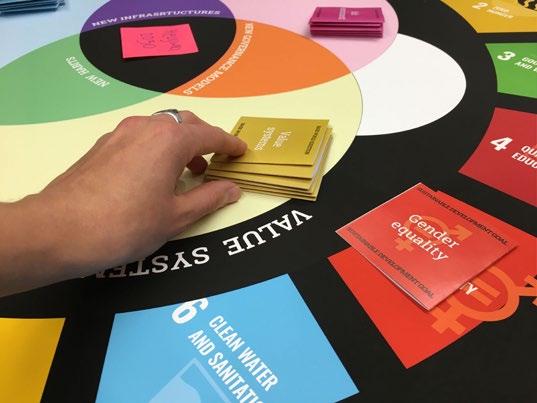

more creative, holistic and systemic ways of thinking around sustainability challenges.
Thirdly, there is a need to operate at an interorganisational level to enable a systemic shift through systems-oriented thinking and collaboration across industries, organisations and individuals.
Next, we’ll discuss these three needs through a case study of the Sustainable Futures Game , designed by service design agency Hellon in collaboration with several researchers and practitioners as part of the EU-funded Horizon 2020 Project. The Sustainable Futures Game follows the Play framework for co-design 2 and adapts the UN’s Sustainable Development Goals (SDG) framework as a tool for directing holistic ideation and scenario development. The Play framework describes design games as a tool, mindset and structure for engaging groups of people to share
2
their experiences and imagine better services and customer experiences in a game-like atmosphere. The Sustainable Futures Game combines design, gaming and storytelling into a half a day creative co-design session, with the aim of gathering people together to envision desirable futures and seek paths towards them. The game has two phases:
1) Co-visioning a desirable future state in 2030 in the form of fictional story, and 2) Back-casting and reflecting to identify challenges ahead of us and generating ideas on how to tackle those challenges.
Three identified needs for organisations’ transformations towards sustainability
Based on our experiences from transformation design, a sustainable and resilient organisational change is only possible if employees in an organisation have a clear vision of the direction of that change, what their role is in it, and how it connects to the bigger picture. The same logic applies to organisational transformations towards sustainability. The Sustainable Futures Game works as a case study to visualise how service
Touchpoint 12-3 47 service design with the planet in mind
Vaajakallio, K. & Mattelmäki, T. (2014). Design games in codesign: as a tool, a mindset and a structure. In CODESIGN: INTERNATIONAL JOURNAL OF COCREATION IN DESIGN AND THE ARTS. 10, 1, p. 63-77
The Sustainable Futures Game can be played online or as a physical board game
design can address three change needs for sustainability transformations: (1) the need to imagine alternative futures, (2) the need to enable organisational shift, and (3) the need to operate at an inter-organisational level.
The need for a mindset shift for reimagining organisational practices and processes from a sustainability perspective
The ability to imagine alternative desirable futures is the first step towards enabling a mindset shift within organisations on how existing organisational practices and processes can work differently. The design game can work as a future-oriented tool to help organisations recognise their role in desirable societal futures, as well as identify future needs that a sustainability transformation might open for them. It helps to reflect on questions such as: “What could a desirable and sustainable future look like?”, “What kind of decisions can take us towards that future?”, “How can we, as an organisation, be part of building that future?” and, “How do we need to change?”
In the Sustainable Futures Game, participants with different backgrounds collectively tell a story of a specific city as it could be in 2030. While creating the story, they are given questions and ready premises together with the UN’s SDG goals as ‘frames’ and food for thought. The main idea is not to create a fact-based scenario, but rather to let people imagine what kind of future they personally see desirable within the given frames. While co-creating the story, they simultaneously move between different scales and perspectives ranging from personal wishes and aspirations to societal norms and political structures. This activity reveals the interconnections between personal values, organisational practices and society at large.
In the second part of the game, participants jointly create a 2030 scenario which is utilised as a starting point for back-casting potential pathways that connect organisations’ capacities and actions to reach the scenario. Therefore, the game material
and structure make abstract and ambiguous facets of sustainability more tangible, allowing joint discussion and sense-making while also triggering imagination to envision alternative futures. Building on a design tradition, the game facilitates discussion around desirability, shifting the mindset from ‘what can be’ or ‘what will be’ to ‘what could be’. Players of the Sustainable Futures Game so far revealed that the ability to imagine alternative ways to ‘as-is’ need to be trained and strengthened. This game provides a unique tool and experience to practice this imagination muscle.
The need for an organisational shift to empower employees to imagine and act towards greater sustainability
In many organisations, sustainability is still seen mainly as a concern of dedicated employees and experts. However, in order to enable organisational change, a wide range of employees from several departments and backgrounds need to be engaged in the process. Furthermore, sustainability experts can benefit from alternative, creative and diverse views on the topic. This logic also aligns with a service design practice which builds on diverse perspectives and experiences that different people bring into the process.
In the Sustainable Futures Game, employees may become part of the early scenario-building process and sustainability discussions that can be utilised later to formulate the future direction. This co-creation activity can potentially empower those besides sustainability experts in the transformation process. Based on our experiences, the game also creates a sense of urgency to encourage behavioural change.
The UN’s SDGs, on the other hand, are broad, and not always easy to connect to an organisation's everyday practices. However, to empower all employees, some understanding of the SDGs is called for. The game introduces the SDGs and raises awareness of them, yet doesn’t aim to teach them. As a result, the game can motivate employees
48 Touchpoint 12-3
from multiple teams in enabling organisational change on a practical level by making this ambiguous and abstract topic more tangible.
The need for a systemic shift to evoke systems-oriented thinking and collaboration across organisations and individuals One of the biggest challenges of sustainability is its complex and systemic nature. Although we believe that everyone can make a difference, to create real impact demands actions and collaboration among multiple stakeholders and organisations. For an organisation to rethink its practices and even business from a sustainability point of view may require new capabilities and resources even from very unexpected fields or sources. Organisations need to increasingly reflect questions such as: “How do we make an impact?”, “What new capabilities and resources will we need?” and, “Who should we collaborate with?”
The Sustainable Futures Game does not give exact answers to the above questions, but it helps to form a holistic understanding of interdependencies between different societal actors. The different frames utilised to create the story – e.g. political, economic and social norms that could be present in that city in 2030 – introduce relationships between several stakeholders and actions.
The second part of the game pinpoints the importance of connecting long-term consequences of today’s decisions and enabling desirable futures to guide our actions and decisions today. The problems identified in the second part of the game are usually systemic, interconnected topics that cannot be solved only within one organisation. As a result, the game encourages players to reflect and consider many different parts of society that are needed for transitioning towards desirable futures. The game increases the players’ understanding of a desirable future, and the awareness that different parts of the society need to be considered together.
Conclusions
Organisations’ transformations toward sustainability are complex processes dealing with multifaceted questions, requiring large-scale actions, and demanding expertise from several fields. Based on our experiences from service design practice, organisations’ CX transformations, and sustainable design, we believe that service design has the potential to contribute to such transformations. In this article, we have presented three change needs which organisations currently face in sustainability transformations, and we have discussed how service design in general and the presented case study in particular can bring value in addressing those. Our experiences from using the Sustainable Futures Game are still in the early stages, and we will explore further our notions shared here. We are also continuously looking for different ways to be part of building more sustainable futures throughout our work.
This project has received funding from the European Union’s Horizon 2020 research and innovation programme under grant agreement No 870759. The content presented in this document represents the views of the authors, and the European Commission has no liability in respect of the content.
Touchpoint 12-3 49 service design with the planet in mind

Ben Reason is the Founding Partner of Livework studio.
He has 20 years’ experience in service design, consulting in numerous industries internationally. He is a senior and strategic advisor to clients and has a particular passion for designing for sustainable futures.

Anne van Lieren is a Senior Service Designer at Livework studio. She supports corporate clients with large customer centric transformations and utilises behavioural science to create sustainable change in organisations, individual employees and customers.
What’s Customer Centricity Got to Do with the Climate Crisis?
Putting future customers at the heart of organisations
The driving logic of service design has been customer-centricity. That a better customer experience is good for customers, business and operations is the core of our belief system. This logic is, however, based on confidence that the economy is benign. The climate crises we face ask deep questions of this assumption.
Is service design still meaningful?
We do not need, or have space, to critique the existing economy and that can be found elsewhere. We are approaching this article with the belief that it will need to transition to a state that is decarbonised, circular and regenerative in order to arrest ecological impacts.
This is a huge challenge to all organisations and a huge challenge to service design, as it will require those businesses to rapidly change their business and operating models. Improving customer experiences in this context feels like a distraction from the job at hand. In this article we argue that the steps taken by service design to humanise organisations through customer centricity can be first steps towards wider transformation from rational, mechanistic models that exclude human and ecological factors towards more inclusive and sustainable models.
We are questioning the core relevance of the beliefs that service design has grown up with. Are our skills, approaches and tools still relevant in the transformation that we need to see take place?
Service design is a key enabler of transformation
The true object for service design is the organisation. The key challenge of organisations is not to come up with customer-centric services, it is evolving themselves to remain relevant. Traditional management techniques alone lack the required levels of engagement, creativity and human insight to address challenges that require radical change to existing models. Service design plays a key role in helping organisations to deal with the ambiguity and uncertainty that comes with transformation. The mindset
50 Touchpoint 12-3
and tools enable an organisation to translate abstract strategic intentions into the tangible, practical changes that are required to make it part of the business-as-usual in every corner of the business.
The climate crisis is the ultimate organisational challenge. Organisations are setting (sometimes hugely ambitious) sustainability goals, such as Net Zero commitments, but few companies are able to move beyond standard CSR strategies and leverage their core business to meet these goals. Innovative renewable and circular services simply won’t stick if the core strategy, mindset, metrics and change mechanisms remain the same. The challenge is the unprecedented pace of - and depth of - organisational change required to deliver on these commitments.
Customer-centric organisations are not living up to their sustainability goals Organisations across all sectors have recognised the value of a customer-centric approach. Service design supports organisations with the fundamental shift in mindsets, measurements and daily practices that are required to be truly customer-centric, by making use of the key principles and practices of service design. We can summarise our approach as ‘outside in’ - we help organisations to gain customer insight, conceive better experiences, design and test improvements for (existing) customers, and finally align operations to these principles.
Customer-centricity as we now know it might be short-sighted and can, in some cases, be detrimental in that it revolves around current needs and expectations of (individual) customers, citizens or clients.
For example: One of our customer-centric clients in the retail domain struggled with the topic of returns. Free, no-hassle returns are the standard customer’s expectation, but the organisation recognises that it is not sustainable for the environment or as a long-term business model. Rethinking returns is a huge challenge and provides tension in the organisation as it questions
the dominant logics, which are focused on creating short- term, monetary and direct customer value.
To respond to the climate crisis and the transformational challenge posed to organisations, we need to employ the same outside-in approach. But in this case, for the collective and future needs of people.
An outside-in approach focussed on the future customer
We have experienced that the dominant approach to sustainable transformation is to understand the technical changes that need to be made, and then deliver them. For example, organisations try to optimise their supply chain and key processes to reduce environmental impact. This is an inside-out approach that we often encounter with organisations that try to tackle customer centricity challenges. Service design offers an outside-in alternative.
The key difference is that the ‘outside’ that we need to ‘bring in’ is future customers and their future context, both of which will be heavily impacted by climate change. By doing this, we can move the conversation from a technical question about how to decarbonise processes to a human one of how to go on a decarbonisation journey with customers. In other words, how to meet their needs to transform, and how to meet their needs to adapt to a changing world?
For organisations to go on a decarbonisation journey together with their customers requires all employeesfrom executives and decision-making management to front-line staff - to adopt a more human approach and mindset. It requires a combined effort of both top-down and bottom-up, in which all employees are aware of and understand how they can create positive impact.
To illustrate this from the context of some of our clients:
A sportswear company built on selling products and customer obsession is aware that it will have to transform its business and that customers’ changing expectations will be a part of this. They need to understand future customer expectations and adapt
Touchpoint 12-3 51 service design with the planet in mind
their value propositions to the changing needs, not just design lower-impact sports shoes.
A bank built on investing based on financial considerations will soon have customers with net-zero ambitions and a need for financing that understands the changing risk profile of this customer and is able to support them in their goals.
A health service used to steady-state, predictable patterns of illness is going to need to adapt to less predictable, more volatile needs that arise from climate-related changes, events and even mental health impacts.
In all these examples, there is a need to continue to be focussed on the outside, on the customer and their changing context, in order to be able to transform the organisation, core business and value propositions in a way that is truly relevant and not simply a technical exercise.
The ecological crisis is an existential organisational challenge
A sustainable transition often seems like a technical challenge that is backed by strong leadership and ambitious goals. Most businesses are able to do the analysis, understand the problem and incorporate sustainability commitments in their strategy. Technically, these goals are feasible, but it’s organisational readiness that forms the real problem: inevitably these goals will challenge the status quo (norms, beliefs, values) of any business. Short term (customer) impact and monetary value need to be supplemented by long term change and integrated value, for all stakeholders involved, including the environment.
Organisations are going to need to learn how to reduce their short term gains in favour of more future-focused ethical and ecological considerations. This makes the climate and ecological crisis the ultimate organisational challenge to design for.
Typical challenges and tensions we encounter at our clients include: how people prioritise projects, why they (do not) align around sustainability goals, why they (do not) dare to question the current status quo and why they (do not) collaborate for sustainable service development. We strongly believe we can leverage the same methods and tools from our customer-centricity approach to provide clients with ways to challenge traditional paradigms in organisational culture, leadership and business, and showcase how they can weave sustainability into everything they do and how they do it.
Service design needs to take a stand
For these transformations to be successful, we believe service design as a discipline needs to move from a relatively value-neutral ‘problem solving’ mindset to take on a more leadership role in defining the challenge in human terms and to take on the task of facilitating organisations towards more desirable futures. We need to understand what new tools, approaches and levels of agency this role requires from service designers and design leadership.
To further explore this, Livework is partnering up with the Delft University of Technology to do more (field) research into this challenge. If you feel compelled by our line of thinking, or want to challenge it, please join the ‘From Client Centricity to Sustainable Futures’ Linkedin community where we will continue to share our work in progress.
52 Touchpoint 12-3
Paving the Way for Sustainable Change
Co-creating a circular reality through service design
“By 2040 we will be carbon neutral!” is a phrase often shared in mainstream media by companies and institutions to show their commitment to sustainability. Often, however, concrete plans are lacking or are vaguely formulated. In our experience, service design is uniquely equipped to bridge the gap between aspiration and reality.
Much like companies, Dutch cities have some big goals of their own. By 2030, 50 percent of all material flows need to be circular, with the aim of reaching full circularity by 2050. This includes all materials in the public space: from pavement to lampposts and benches.
Helping Apeldoorn’s material streams become circular
Currently, when a public space is being renovated, old materials are disposed of and replaced by new ones. The municipality of Apeldoorn, which has about 160,000 residents, is looking into ways to reshape this linear system of ‘take, make, waste’ into a circular system. Together with them, we used service design to turn this ambition into concrete action.
Working with a wide range of stakeholders, we designed a digital database of these materials, addressing the needs of administrators at the municipality as well as project managers executing the renovation work. To
obtain the data about these materials, we worked with novel scanning technologies, which required streamlining the collaboration between software developers and data collectors. When materials are set to be removed in a renovation effort, their information is shared with a materials marketplace which actively looks for opportunities for a new use or location. This required further collaborative effort between the marketplace, software developers and administrators. Though the solution is technical, the main challenge here is a human one. We needed to orchestrate the collaboration between a wide variety of stakeholders to create a process for circular use of materials in the public space. In this project, we learned about the value of service design to support large transitions: Enabling technological solutions through a human centred approach. We’re eager to share the key factors of this success.

Joost van Leeuwen is a Senior Consultant at Koos Service Design. Combining his skills and purpose, he is on a mission to accelerate the transition to a sustainable society. Together with a wide range of clients, he is walking the walk to the circular future our goals envision.
Touchpoint 12-3 53 service design with the planet in mind
Empathy and shared ownership
Before doing anything else, we conducted in-depth interviews with all stakeholders to learn about their needs and daily activities. In doing so, we got acquainted with the process and jargon of renovations in the public space.
Capturing our findings in a visual overview –a process journey – we created an artefact around which we held discussions and idea generation sessions.
Although the stakeholders shared a field of expertise, we found that definitions of sustainability and circularity varied widely, and people interpreted them differently. This insight led to the creation of a common vocabulary, helping us to set common goals and form a solid basis for co-creation.
Co-creating a new reality
Getting clearer in our language and goals, wetogether with the stakeholders - used the process journey to find opportunities for circular change. By focussing on concrete and attainable changes, we empowered all stakeholders to contribute. We found incremental opportunities in individual stakeholder’s activities. Interventions like setting up APIs between databases, or creating a zero measurement for future reference by scanning the road to collect data right after a renovation. Together, these small changes amounted to a thorough update of the system as a whole. It lead to the design of a circular process that everyone could incorporate in their current way of working.
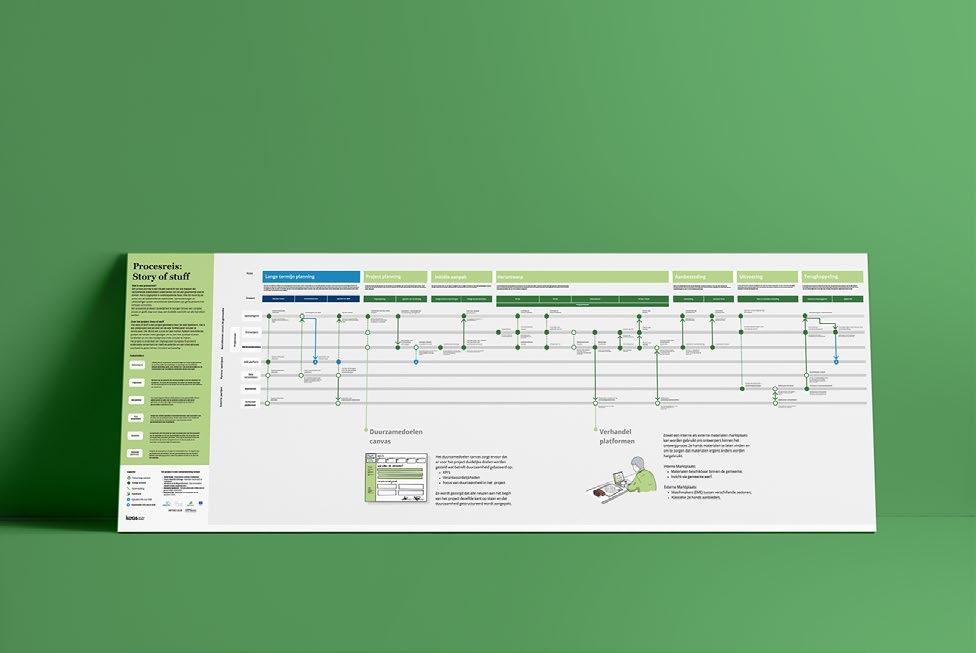
54 Touchpoint 12-3
The final process journey
Onward!
The project’s outcomes are currently being developed and piloted. Based on the output, stakeholders are adapting the software back-end of the material database, a depot will help store materials in the municipality and a marketplace is being tested. The results will be in by the end of 2021, after which the effort can scale up to make circular material flows a reality.
In typical CX projects, service designers reflect the voice of the customer to the client. These transition projects require us to bring that appreciation for empathy within a team of stakeholders. Where, through our involvement, we reflect the voice of the group, making sure everyone is heard and involved.
In doing so, service designers encounter new challenges. The transition to a sustainable society makes big changes inevitable in highly technical fields and systems. Usually reserved to experts, we’ll encounter more jargon than we are used to. If we want to contribute in these fields, we need to be prepared to immerse ourselves and develop tools to create a common language among the involved stakeholders. This requires us to go deeper into a subject than we are used to, but it leads to more concrete and rewarding results.
Large systems need to change in our transition to a sustainable society and the accompanying challenges are as human as they get. Service design can act as the glue between technological solutions and the teams that need to incorporate them. By adding the human element to the equation, we can make our abstract goals concrete.
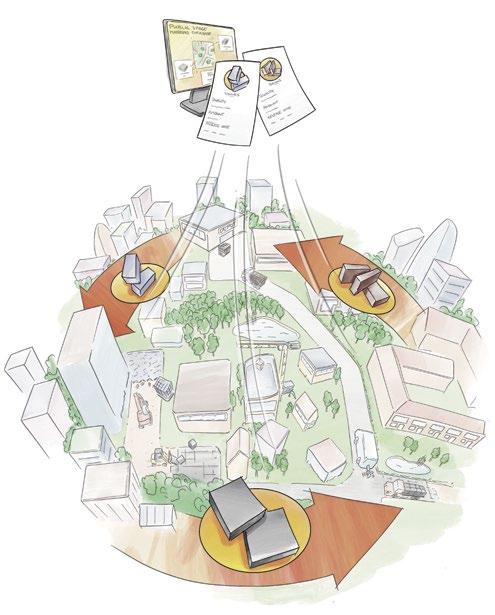
Watch an animation video of this project here:
https://youtu.be/1FrHUxnnMQ8
Touchpoint 12-3 55 service design with the planet in mind
39/39
A digital materials database is now being designed to manage material streams in the municipality of Apeldoorn

Emily Wright (she/they) is a queer design researcher and facilitator and Founder of We Become, a lab for organisational change toward social and environmental justice. They co-founded the SDN climate working group and co-designed the first U.S. Climate Assembly in Washington State. They occupy Duwamish lands (Seattle, USA).
I would like to extend deep gratitude to Behnosh, Kamal, Rachel and Deepika for reviewing with an open heart and offering poignant feedback to crystallise this story’s core messages.
‘Somatic Design’: Engaging the Body for Climate Healing
Body-centered design practices show potential for transforming values and systems
Climate change is symptomatic of a failing system designed upon principles of dominance and extraction, causing trauma to people and planet. Emerging evidence shows that when design processes engage the body through ‘somatic design’, they have more capacity to embody different principles, support healing and contribute to transformative systems change.
Changing values to change systems
Designing for climate solutions often entails reducing carbon pollution, creating circular systems, restoring ecosystems and building adaptive capacity. These are all essential, but any solution is incomplete if it mitigates symptoms without recognising and addressing harms generated by the same systems causing climate change, and radically transforming those systems.
Indeed, the unprecedented accumulation of atmospheric carbon pollution and associated impacts are symptomatic of systems designed upon principles of dominance, scarcity, extraction and disposability. These are some of the same principles underpinning colonisation, white body supremacy, patriarchy and other forces of oppression, which the Just Transition framework makes visible.1 These systems have caused trauma to both the planet and humans. While ‘trauma’, ‘colonisation’
and ‘oppression’ are mostly taboo in dominant workplace culture, they are integral to the climate conversation. Core systemic values need to change to stave off the worst climate impacts and thrive on a rapidly changing planet. Since societal values are embedded within everyday design practice, this is where they must be radically changed. The design process itself is part of the solution space. Changing systemic values involves uncovering and healing traumas wrought by the failing system. Design practice can more effectively bring about systemic transformation by embodying values of a just, sustainable future and creating space for designers, users and other stakeholders to heal.
56 Touchpoint 12-3
1 See Climate Justice Alliance’s definition and history of Just Transition at https:// climatejusticealliance.org/just-transition/
Origins of climate trauma
Trauma occurs when a person experiences a threat that is “too much, too soon, or too fast” for them to overcome. 2 Climate-related trauma can include:
Primary trauma that happens to us from directly experiencing severe weather or disaster, living with daily stressors of this existential threat (e.g. reading about climate projections), and fearing future catastrophe. 3
Secondary trauma, which happens to others but we witness or participate in, such as degrading ecosystems.
Historical trauma, which is inherited through generations from centuries of humans’ separation from and power over nature, reinforced through colonisation, capitalism and land privatisation. 4
Like all trauma, climate-related trauma is an embodied experience. It occurs at the neurobiological level, altering brain chemistry and nervous system patterning. 5 For example, a person might feel heat and rage in their chest when seeing oil infrastructure threatening water sources. Someone may feel an elevated heart rate and contraction in their belly as drought and extreme heat forebode another severe wildfire season. Another person may experience depression and heaviness in their shoulders from losing their coastal homelands to rising seas.
2 Menakem, R. (2017). My Grandmother’s Hands. Central Recovery Press.
3 Kaplan, Ann. 2016. Climate Trauma: Foreseeing the Future in Dystopian Film and Fiction. Rutgers University Press. Richardson, Micheal. 2018. “Climate Trauma, or the Affects of the Catastrophe to Come,” Environmental Humanities 10 (1): 1–19. Woodbury, Zhiwa. 2019. “Climate Trauma: Toward a New Taxonomy of Trauma.” Ecopsychology 11 (1): 1-8.
4 Alberro, Heather. 2019. “Humanity and nature are not separate.” The Conversation, September 17, 2019.
Schultz, P. 2002. “Inclusion with Nature: The Psychology Of HumanNature Relations,” In: Schmuck P., Schultz W.P. (eds) Psychology of Sustainable Development. Springer, Boston, MA.
Vining, Joanne et al. 2008. "The Distinction between Humans and Nature." Human Ecology Rev 15 (1): 1-11.
5 Van der Kolk, B. (2014). The Body Keeps the Score. New York: Penguin Books.
Building awareness of climate-related trauma in design practice is an important step toward healing. Trauma-informed design involves “recognising the prevalence and impact of trauma on people’s minds, bodies and spirits” and using that awareness to co-design “environments where people can feel safe enough, visible and validated.”6
We cannot talk about climate trauma without acknowledging that some people are more impacted than others.7 Black and Indigenous communities and other communities of colour continue experiencing disproportionate impacts from climate change. Moreover, climate trauma layers onto existing traumas from living within oppression, adverse childhood and adult experiences, and intergenerational trauma. Addressing inequities is integral to healing trauma and preventing further harm. Trauma-informed design is foundational to shift design practice toward climate healing. Another integral pillar is engaging the body.
Engaging the body in design
The body is a site of climate trauma and a site of healing. Somatics refers to numerous practices based in the soma (simply put, the interconnected mind-body-spirit) that increase awareness of physical sensations in the body as signals. 8 These signals indicate nervous system states, stress, threats, needs, desires and boundaries. Cultures around the world have practiced somatics for generations. Somatics is increasingly applied with a politicised praxis of change to support healing and
6 McKercher, K.A. (2021). “Trauma-Informed Practice and Design.” [Online]. Retrieved July 17, 2021, from: https://www.notion.so/ Trauma-informed-practice-and-design-a4e5a48199934c34871f7c177 1b364e3
7 For example, see: Howell, Junia and James Elliott. 2019. “Damages Done: The Longitudinal Impacts of Natural Hazards on Wealth Inequality in the United States.” Social Problems 66 (3): 448–467. Jesdale, Bill, et al. 2013. “The Racial/Ethnic Distribution of Heat Risk–Related Land Cover in Relation to Residential Segregation.” Env Health Perspectives 121 (7).
8 Haines, S. (2019). The Politics of Trauma. Berkeley: North Atlantic Books.
Touchpoint 12-3 57 service design with the planet in mind

58 Touchpoint 12-3
Fig. 1: The layers and shaping of the soma
liberation for BIPOC and LGTBQ+ communities and other people from historically oppressed groups, as well as to dismantle internalised supremacy within white bodies and other bodies of dominant cultures.9
There is an emerging use of somatics in design. Observations in the field reveal ‘somatic design’ practices popping up like mushrooms — visibly distinct aboveground but interconnected by mycelia in the soil. For example, in Seattle, designer Kamal Patel and teaching artist Jéhan Òsanyìn collaborated with BIPOC community leaders to create local regenerative economies. They co-created a culture of embodiment in the design process through breathwork and envisioning what the bodies of future generations would feel. An embodied approach was integral to transforming what has been into what might be.
Black Womxn Flourish, a design for wellbeing collective based in Baltimore, applies embodiment throughout their work, from building a ball pit for sensory play to body-centred rituals to experiences designed for pleasure and joy.
Recently, Change Elemental in Washington, DC, gathered their team to explore how to use financial resources to support a community of care across their diverse network of relationships. They used breathwork, reflection, body awareness, emotions, intuitions and stories to allow a vision to emerge.
In 2019, I experimented with somatics in a design workshop at the Seattle Design Festival with dancer
Jasmmine Ramgotra and artist Mari Shibuya. We co-designed an experience to help participants process climate anxiety and ideate possibilities for healingcentred climate action. We used music, movement, meditation and art to invite participants to feel sensations, emotions and stories in their bodies, and then invited collective processing and imagining.
These examples are diverse in terms of their approach and depth of somatic or body-based practices, but they all hold an orientation toward healing and wellbeing, whether personal, social, economic or ecological. They also integrate visioning of yet unknown and hopeful futures filled with possibilities.
Pairing these observations and experiments with lines of somatic teachings, I offer several conceptual currents that run through this emerging ocean of ‘somatic design’ methods:
9 Menakem, R. (2017). Haines, S. (2019). brown, a.m. (2018). “What Your Body Has to Do With Social Change.” [Online]. Retrieved August 12, 2021 from: https://www.yesmagazine.org/socialjustice/2019/05/14/adrienne-maree-brown-social-change-bodypleasure-activism
Menakem, R. (2020). “‘Notice the Rage; Notice the Silence.’” Interview with Krista Tippett. [Online]. Retrieved August 12, 2021 from: https://onbeing.org/programs/resmaa-menakem-noticethe-rage-notice-the-silence/ Jossell, S. (2021). “Prentis Hemphill Is Forging a Path Toward Collective Healing.” [Online]. Retrieved August 12, 2021 from: https://www.them.us/story/prentis-hemphill-finding-our-waypodcast-interview
1. Design is practiced within systems. It is contextualised and affected by institutions, culture, history, oppression, power and trauma. Design has its own history of harm,10 as well as lineages of healing and transformation. Equity-centred design, design justice and liberatory design are three areas of advancements in the field that ‘somatic design’ methods can learn from and build alongside.11 Somatics acknowledges the past, present and future with respect to social and systemic forces. This context can transform body-based practices used by some service designers (e.g. bodystorming, improvisation) into tools for systems change, and can mitigate the risk of avoiding politicised work that is common in Western and white ‘mind-body’ spaces.
10 For a brief primer on the flaws of design discipline, watch Sarah Fathallah’s presentation, School of Visual Arts’ Design for Social Innovation Global Guest Lecture Series, February 3, 2021. https://dsi.sva.edu/lecturer/sarah-fathallah/
11 Some resources for these practices include Creative Reaction Lab’s Equity-Centered Community Design Field Guide, Design Justice: Community-Led Practices to Build the Worlds We Need by Sasha Costanza-Chock, and the collaboratively developed Liberatory Design Deck.
Touchpoint 12-3 59 service design with the planet in mind
2. The service ecosystem includes the soma. Alongside service users and providers, the body is an integral part of the service ecosystem. System maps, service blueprints and journey maps can dedicate space for the somatic experience of actors, building upon the emotions, relationships and power dynamics sometimes captured in service blueprints.
3. The soma is a source of information. Physical sensations and emotions offer information about peoples’ needs, desires and boundaries, which may not otherwise emerge outside of embodied practice. For instance, we might ask: what does a relationship feel like in the body? Does it evoke grounding or fear? How do embodied experiences differ across racial, ethnic, gender and other identities, given the impacts of oppression on individuals? ‘Somatic design’ considers embodied knowledge essential to the design process.
4. Services shape the soma. Like icebergs shaped by water and air, each person’s soma is shaped by many forces across time and space, including ancestry, culture, environment and systemic conditions. These forces impact worldviews, values and ways of being. Services shape the soma as well. They come with norms, expectations and value systems, which affect the soma of people in the service ecosystem, whether or not it is acknowledged. These effects are also mediated by how a person’s soma has been shaped by other forces and experiences, resulting in different experiences of the same service across identities.
5. The soma is a site of change. Fractal patterns in nature demonstrate that “what we practice at the small scale sets patterns for the whole system.”12 ‘Somatic design’ considers the soma a location in the service ecosystem where action occurs. If engaged responsibly and for the sake of individual and collective healing, services can be designed to cultivate embodied change toward systems change.
12 brown, a.m. (2017). Emergent Strategy: Shaping Change, Changing Worlds. AK Press.
In sum, based on these observations and theoretical investigations, ‘somatic design’ is a way to engage the body in design practice for transformative systems change. Excitingly, the geography of these methods is still emerging. Further research is needed to understand its contours, define principles and facilitate sharing and co-evolving of practices in a responsible and accessible manner.
For example, there is immense potential for ‘somatic design’ methods to support healing, but because there is risk of triggering traumatic experiences, they are not to be used lightly. While the examples given earlier show that design processes do not have to explicitly focus on trauma in order to support healing, they must acknowledge the likely presence of trauma in peoples’ somas and be prepared for it to surface when engaging the body. Therefore, service designers are not advised to leap into these practices. They need to understand trauma, how it is embodied, and how to be responsive to it when it is triggered. Training in trauma-informed practice and collaboration with social workers and mental health practitioners is highly warranted.
Contours of practice
That said, service designers can start applying the lens of ‘somatic design’ to their work for climate solutions by learning about trauma and asking questions about the soma in the design process. How can we cultivate empathy with users who hold ecological grief or who have experienced severe weather? What might be happening in someone’s soma as they participate in this service? Service designers can also apply a ‘somatic design’ lens as a tool for self-awareness, asking, “How do I respond to moments of stress? What worldviews and values have shaped my relationship to others and the planet?”
The designer should be prepared for these questions to prompt more questions, signal a need to slow down or pause the process, or reveal inner work to be done. Whatever emerges, it is all a part of the transformative change process. Designers should expect discomfort and create space for themselves and participants to process in their preferred ways, with support from social workers or other professionals as needed.
60 Touchpoint 12-3
Concluding thoughts — coming back into being ‘Somatic design’ reminds us that the landscape of design does not stop at the surface of the skin; ideas and wisdom take refuge in cells, carried from one generation to the next. With a nurturing environment, that wisdom can surface and be exchanged, allowing the most transformative ideas to emerge. How to create an environment for emergence is the formidable task that ‘somatic design’ can help us face.
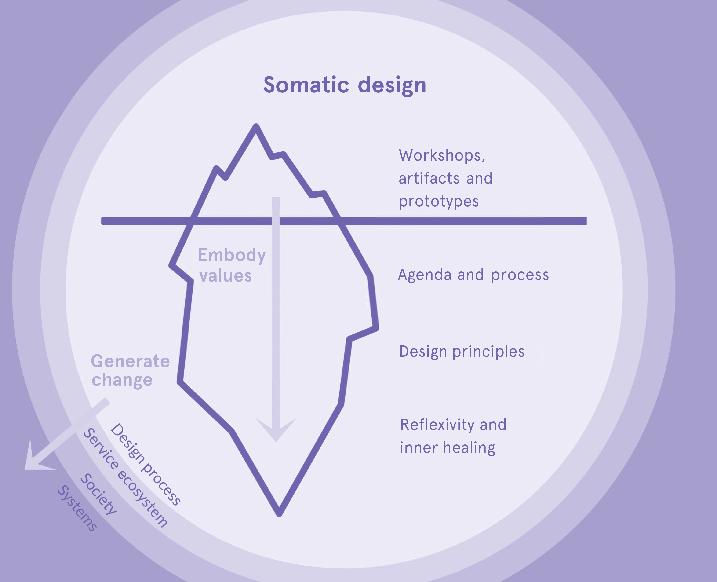
Touchpoint 12-3 61 service design with the planet in mind
Fig. 2: Embodying values and generating change in a somatics-integrated design process
 Remco Lenstra is founder and CEO of Re-framed BV and Academic Director Business Design Thinking at Antwerp Management School.
Remco Lenstra is founder and CEO of Re-framed BV and Academic Director Business Design Thinking at Antwerp Management School.
Remco is a ‘pracademic’ by nature, intent on bridging the gap between academia and practice, one tool, research project or workshop at a time.
The Thoughts You Allow Determine Your Actions
Driving transformation based on Sustainable Development Goals
Design has grown a conscience. As design has become aware of its impact on global and complex issues such as microplastics, consumerism and social inequality, it has also become increasingly capable of addressing holistic and networked problems and impacting society and the planet in a positive way, with intent.
This article introduces an accessible tool – the ‘Purpose Ladder’ –to help teams set the scene towards sustainable transformation using the Sustainable Development Goals (SDGs) as a guide.
The impact of the Sustainable Development Goals
With the development of the 17 Sustainable Development Goals, the United Nations (UN) has succeeded in creating a globallyaccepted framework that balances and integrates social, economic and environmental sustainability. As a designer, conceiving experiments and interventions in systems that contribute to subsets of these goals, implies that you are aligning with a global effort to end poverty, protect the planet, and ensure that by 2030 all people will enjoy peace and prosperity.
For example, any design driven project producing more-desired outcomes (e.g. SDG 4: Better education) and reducing less-desired outcomes (e.g. SDG 10: Reduced inequalities), is de facto
contributing to this vision for a better world. Using the SDGs as a framework for creating a shared understanding of a desirable future is becoming an accepted approach within the design community.
The SDGs have proven to be a powerful asset in guiding this much needed conversation that gives organisations direction, especially when the topic of ‘purpose’ comes into play. It also helps organisations to mentally detach themselves from daily operations, creating a “sandbox environment” which leads to more innovation. It goes without saying that adding SDGs to the conversation during the framing phase of a project yields different, more impact-driven results, as well as an added freedom for designers and stakeholders alike to really push the envelope on innovation and ambition.
62 Touchpoint 12-3
Fig. 1: ‘Purpose Ladder’ –The manual explained on the sheet in 13 steps
WriteasuccinctactionorientedplanonHOW youwillachieveyourWHY
reasons9)HOWmightI(theservice)servethese evenbetter(formulateshortstrategies) reasons8)HOWmightI(theservice)servethese evenbetter(formulateshortstrategies)
(formulatethesereasonsevenbetter shortstrategies)
The guided conversation that is design Design processes are guided conversations that need to be designed with intent. Templates and tools allow us to provide a structure to these conversations. The ‘Purpose Ladder’ is just that. It is a template/ canvas that allows for a very complicated conversation to take place in a relatively short time frame.
Formulating a purpose is typically daunting for participants, because it implies you are thinking of a future in which you might become obsolete once you have fulfilled your goal as a company. Additionally, it is often too great a mental stretch for participants to forget the present and really allow free thinking about the future. Furthermore, it is hard to connect the ‘now’ to this preferred future, bridging this distance by building a roadmap of future services.
The ‘Purpose Ladder’ combines two mechanisms: Thinking about the ‘why’ of your organisation in an increasingly broader context (both time and scale), and developing a ‘plan’ – a roadmap over time. The tool has been developed to allow existing companies to think about
the bigger picture, starting from their current service offering, using the ‘laddering’-technique. The intention is that companies in a facilitated, iterative process construct a train of thought starting from their current offering towards reaching their SDG-inspired goals, over a time span of 10 to 30 years. They develop a high-level timeline that connects the ‘now’ with that ‘desired future’ in a sequence of possible actions, new products and/ or services. The buildup of the conversation is designed to coax participants into allowing more ambitious thoughts, without losing connection to the present.
The ‘Purpose Ladder’:
An integration of several strategic frameworks
The ‘Purpose Ladder’ combines several elements and concepts:
The UN’s SDGs, as a way of formulating the societal finality of the company Exponential thinking (see work from the Singularity University) to build a technological timeline
Touchpoint 12-3 63 service design with the planet in mind
1) WHY do (the service) exist for internal stakeholders? 2) WHY do (the service) exist for external stakeholders? 6) WHY do I (the service) exist for Society? 3) pick a subset of 3 SDG's your organisation wishes to contribute to 4) pick a subset of 3-4 technologies that will impact your sector over the coming decades serve7)HOWmightI(theservice)
0) Current products/services 11) WHAT new or improved products and services could result from these strategies (timeframe 1-2 years) 12) WHAT new or improved products and services could result from these strategies (timeframe 2-5 years) 13) WHAT new or improved products and services could result from these strategies (timeframe 5-30 years) 10) create a timeline on when wil these technologies impact your sector? Technological future Societal future PURPOSE LADDER Ladder your way to your massive transformation purpose Massive tranformation purpose (MTP) 5) Formulate your MASSIVE TRANSFORMATIVE PURPOSE
What I do/make What What What How How 10 - 30 jaar
Why Why Why p FOCUS F p FOCUS E P ti ti O y Technology maturity Expected impact (on Business model) Technology maturity/sector adoption Expected (Societal) Impact This tool was developed by Remco Lenstra, within the research program of Antwerp Management School (www.antwerpmanagementschool.be). This work is licensed under Creative Commons Attribution contact remco@re-framed.be. Smart adoption matrix (Scheipers et. al 2016) RE-FRAMED.be

Laddering to create abstraction from the present state ‘Golden circles’ (from S. Sinek) connecting purpose to actions
Brainstorming to fill the roadmap
When to use the ladder
1) In the framing phase of a (re-)design project
At the outset of a project (re-)designing an existing product or service, we use the tool in a three-hour sprint (one single worksheet and workshop) to align the team on the WHY of this project. A direct result is that it enlarges the scope and research space considerably, therefore opening the floor for designers to tackle the system as a whole, instead of being confined to redesigning a single touchpoint. Projects that anchor the results of this workshop into design briefs and processes see this SDG inspired purpose working as a “conscience”, keeping participants focused and less likely to compromise on impact.
2) At the start of a transformation
The purpose ladder is a valuable asset when framing any transformation effort. By nature, it is suited for
sustainable transformation, but it is equally powerful in digital transformation, exponential transformation, servitisation, etc. … In these contexts we use the roadmap in a larger systemic approach. In Systems Thinking, your purpose is often called your “guiding star”, and your mission your “near star”. You reach your near star with a plan (map), your guiding star with your compass. People who follow a compass move more freely than those who follow a map. In the case of systemic transformation, the approach is of course more elaborate, but roughly as follows
The ‘PURPOSE LADDER’ helps us cocreate the bones of our transformation roadmap
An extensive brainstorm takes place over three horizons of time (2–5–30 years)
A co-constructed project-selection matrix helps us to prioritise these ideas
The ideas are put into a transformation roadmap balancing a portfolio of explorative and exploitative projects over time
64 Touchpoint 12-3
Fig. 2: ‘Purpose Ladder’ – Example of a filled-in sheet focussed on circularity / trust in textile value chains
The tool’s ‘Why’
The starting point of the conversation is the current offering of products and services. We ask ourselves/the team to formulate the meaning of our current services from the perspective of the offering (“I am the service”) formulating their raison d’être for three contexts:
1. The context of their internal stakeholders (staff, management, shareholders, etc.).
2. The context of their stakeholders (customers, value chain, systemic actors, etc.).
3. The context of society.
Next we co-create a shared vision of the future and write down a bold statement (our ‘Massive Transformative Purpose’ or MTP) by answering three questions:
1. What three or four of the 17 SDGs do we see ourselves contributing to and even solving in the future (e.g. 30 years)?
2. What technologies do we expect will impact our sector and society within this timeframe? In this step, it is important to take into account that technology develops at an exponential rate.
3. If societal purpose and technological possibilities are combined, what societal impact can we envision? The MTP should be boldly-formulated.
Example of a purpose statement
“Belgium-based Jacoti Hearing Technologies formulated ‘Hearing without Barriers’ as an MTP more than ten years ago. It was– and still is –their goal to eliminate all barriers (technological, social, financial) between consumers and hearing technology, providing accessibility for all. Jacoti recently joined forces with Qualcomm, developing a software-on-chip (SOC) with the capacity to turn any consumer (true wireless) headphone/earbud into an assistive listening device. By adding medical grade online hearing services to their proposition, they might well be on the brink of scaling ‘hearing-as-aservice’ on a global scale, fulfilling this purpose.”
The tool’s ‘How’
For each of the three perspectives, formulate succinct strategies on how you might even better serve these reasons to exist. If your raison d’être for your clients is e.g. ‘convenience and status’, how might you become even more convenient? How might you increase status?
The tool’s ‘What’
Construct a continuum of possible actions, services and/or products over time that connects your current offering to the fulfilment of your purpose for society over the timeframe of thirty years. What might start as relatively incremental additions and improvements will lead to radical and disruptive ideas over time.
Conclusion
The ‘Purpose Ladder’ helps participants to see a project not as an isolated occurrence, but instead frame it as part of an ambitious transformation over time, con necting long-term societal impact with present actions. When the thought of purpose – inspired by the UN’s SDGs – influences the present, the future starts now.
The ‘Purpose Ladder’ is a tool that has evolved organically over time. Its newness is evident in the unique recombination and integration of≈frameworks (some existing, some new). Existing frameworks that were very inspirational to this approach were:
– The Sustainable Development Goals as proposed by the UN: https://sdgs.un.org/
– ‘Exponential thinking’ as introduced by Singularity Academy: https://su.org/
– ‘The golden circles’ as introduced by Simon Sinek: https://simonsinek.com/product/start-with-why/
– Working Paper: Shaping Smarter Businesses by Geert Scheipers, Steven Haes and Valerie Decoene (2020). https://www.researchgate. net/publication/340129868_Working_Paper_Shaping_Smarter_ Businesses
– PSS Design and Strategic Rollout: Tools for Product-Service Systems by Ivo Dewit, Chris Baelus, Kristel Van Ael, Dries De Roeck, Roel De Rijck and Wim Coreynen (2018). https://www.researchgate.net/ publication/317933633_PSS_Design_and_Strategic_Rollout_tools_ for_product-service_systems
Touchpoint 12-3 65 service design with the planet in mind
Introducing ‘Planetary’ to Design

Yulya Besplemennova is a service designer and researcher at oblo and a scientific coordinator of the ‘Service Design Tools’ platform. Most recently, an eagerness to advance design methods has led her to The Terraforming think-tank, applying a speculative approach to the planetary transformations.
In the past couple of years, ‘planet’ became one of the new keywords in design discourse, but to make the use of this word truly constructive we need to study carefully what it implies and how it can alter our old frameworks.
Today we can see how basing humancentred design approach on the ‘manifested’ image of a human as a rational separated individual mastering ‘nature’ – instead of the scientifically correct image of an interconnected, dynamic, constantly changing entity whose actions are impacted by myriad other species and events from micro to macro scales – has brought us to the current crises. We should not repeat the same mistakes and therefore need to learn more on how to approach the ‘planet’ in a way that can advance our discipline and minimise the consequences of misunderstanding it.
So far, the use of the word ‘planet’ and its derivative ‘planetary’ seems to be limited – often it appears just to substitute ‘nature’ or ‘environment’ with something fresher. In other cases, there are suggestions for designers to become ‘planet-centric’ or even consider the planet as a client, which only reinforces outdated paradigms, while what we really need is to liberate the discipline from any ‘centricity’,
and accept systemic interconnectedness – recognising our entanglement with all planetary processes and matter. Let us review some traces of the recent turn towards ‘planetary’ as a term and highlight several points to consider when using it.
A good starting point is Dipesh Chakrabarty’s essay “The Planet: An Emergent Humanist Category” in which he describes the history of how humanity “dealt with the planet without having to call it by that name”1 until we finally started broadly using it only recently. To tell it briefly, for millions of years, humanity inhabited the planet without really being in contact with it as an astrophysical body. What was important for most of our development was just ‘the Earth’ as a surface sustaining all life within the biosphere. Multiple subjective ‘worlds’ were fed by the productive powers of the planet.
1 Chakrabarty D. (2019). The Planet: An Emergent Humanist Category. Critical Inquiry Volume 46, pp. 1-31
66 Touchpoint 12-3

But since the beginning of globalisation, which we can trace back to accelerated advancements in transportation or communication in the 20th Century, or even before, to the planetary-scale colonialist naval missions, the multiplicity of these worlds began to collapse as the technologies enabling new logistic flows of capitalism started to present the idea of a single and homogenous ‘globe’; once again just a shallow surface and a pure abstraction. But sustaining a newly-accelerated global society required more and more resources which come from a real physical planet. A turning point could be traced to 1972 when we for the first time saw an iconic photograph of the whole Earth and also have calculated the reality of its resources being depleted in a famous “Limits to Growth” report by the Club of Rome2 . The illusive shallow bubble of the ‘globe’ has burst to reveal the reality of physical planetary boundaries. As Chakrabarty puts it, “the harder we work the earth in our increasing quest for profit and power, the more we encounter the planet”3 . Together with the acceleration of the climate crisis, this finally brought us to an understanding of the planet as a whole – the
2 https://www.clubofrome.org/publication/the-limits-to-growth/ 3 Chakrabarty D. (2019). The Planet: An Emergent Humanist Category. Critical Inquiry Volume 46, pp. 1-31
planet of ‘Earth System Science’, where humanity does not just scratch the surface but becomes an embedded force within the whole system, one that has profound effects on the other system components.
For many decades, design reinforced the concept of the Earth as a ‘globe’, and that’s especially true for the digital service industry and related design. The largest and most infamous of these – digital platforms such as Google, Amazon, AirBnB, Uber etc. – provide ‘global’ services that treat every part of Earth as homogenous and therefore equally suitable for their deployment, with well-known negative consequences. Now we need to understand how to create ‘planetary’ services that instead align with the physical reality of the earth and its closed system of resources.
To do that, here are some points we might consider to understand the ‘planetary’ concept better.
Spanning from planetary scale to planetary subject
It is important to understand that ‘planetary’ is not necessarily the same as ‘planetary-scale’. The globe of technological acceleration was already ‘planetary-scale’, while ‘planetary’ implies, first of all, not the dimension of our actions, but what Jeniffer Gabrys calls new “humanplanet configurations”4 . It is not by chance that we started
Touchpoint 12-3 67 service design with the planet in mind
Sectional View of the Crust of the Earth by Orra White Hitchcock, 1828-1840 (from Amherst College Archives & Special Collections)
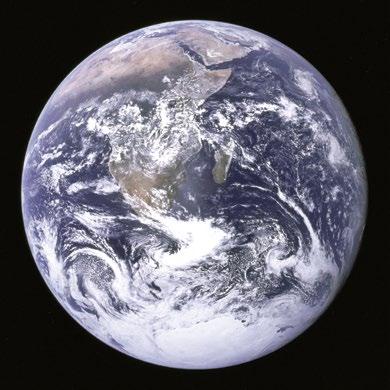
to pay attention to the planet at the same time as the crisis of human-centred design and an urge to move beyond it.
Understanding well our condition in planetary context makes us recognise that we are just one of the living organisms in the network of interdependent relations (which might be something new for the Western cultures while being a basic knowledge for many indigenous peoples). This asks us to update our design frameworks, readjusting to the new notion of what ‘human’ might really be and how it is articulated as a ‘planetary’ subject.
Triggering planetary awareness
As designers, we are constantly dealing with immediate human experiences as the central focus of our work. But reconfiguration of planet-human relations requires us to stop basing our judgements upon direct subjective experience – which brings only a partial understanding of what ‘human’ and human relations to the ‘environment’ are – in order to perceive the whole planetary picture beyond our direct sensorial capacities.
Gayatri Spivak suggests that “we must persistently educate ourselves into this peculiar [planetary] mindset”. According to her, it is about developing a
4 Gabrys, J. (2018) Becoming Planetary, e-flux [Online] retrieved July 20, 2021, from https://www.e-flux.com/architecture/ accumulation/217051/becoming-planetary/
‘The Blue Marble’ is the first image of the whole Earth taken on 7 December 1972, by the crew of the NASA/Apollo 17 spacecraft, which became a symbol of environmental movement
new type of literacy. 5 This is akin to how during the Covid-19 pandemic we learned to trust statistics and read the exponential curve graphs to comprehend the whole picture, which is very different from the ‘just another cold’ narrative of some survivors’ subjective experience with the disease. We need to learn how to build upon these new levels of comprehension to trigger planetary awareness through the services and interactions we design.
Abandoning the centricity
Some recent attempts to go beyond human-centred design have proposed becoming ‘planet-centric’ directly, which brings an alarming geo-centric orientation, when in fact we ought to finalise the Copernican turn and understand not just our relation to the planet, but accept its own context. This means understanding our embeddedness in the system of only one in a multitude of planets in the universe, a perspective from which we can look outwards to the vastness of, so far lifeless, space – this makes the perception of existential risks that we’re causing to life on Earth far more scary and hopefully mobilising.
68 Touchpoint 12-3
5 Spivak, G.C., (2003), Death of a Discipline, New York: Columbia University
As designers, we need to abandon the idea of trying to necessarily get centred on something and realise how to work with the new, disorienting understanding that any arbitrary centre is just one node of an always-bigger whole. “Nothing can ever be isolated from anything, because it’s always connected to everything,” as J. Paul Neeley put it in the previous issue of Touchpoint 6 . To abandon that centricity, we also need to work on the representations that reinforce visions from inside the complex processes of the earth system in which we participate. There are a lot of examples of that in the field of systems thinking and mapping complex systems dynamics.
Becoming deliberate in planetary recomposition
The idea of our embeddedness within the planet is not metaphorical. We are literally composed of planetary matter and are constantly recomposing the planet through all our actions – by our mere existence. This goes from a scale of our individual metabolic processes such as breathing, eating, etc., to enormity of ‘earthmoving’ for our constructions. But humanity as a whole, with its technologies and
institutions, has reached a level of power akin to a geological force, the effects of which so far have been completely uncontrolled. Now, more and more, we ask if we can use that power deliberately, with purpose. There are people who, like Erle Ellis, believe that “the prospects for anthropocenes much better than the one we are now creating are very real”7 and we need to direct our design attempts to implement them by becoming a responsible part of a planetary system. What planet do we want to design now?
Touchpoint 12-3 69 service design with the planet in mind
6 Neely, J.P. (2021). Consider Everything. Touchpoint Volume 12 No. 2, pp. 12-16
7 Ellis, E., (2018), Anthropocene: A Very Short Introduction, Oxford: Oxford University Press
“What Now?”
The role of service design in mapping uncharted territory

Joan Ball, PhD, is an Associate Professor in the Tobin College of Business at St. John's University, founder of WOMBLab, an SDN Accredited Service Design Master Trainer and author of Stop, Ask, Explore: Learn to Navigate Change in Times of Uncertainty (Kogan Page, April 2022).
Disruptions are inevitable. Whether we face system-level events or minor interruptions, we spend our days navigating the uncertain space between strategic ideals, tactical intentions and the ambiguity of the mundane. Most of the time we navigate gaps between our plans and reality without event. Other times we face “What Now?” moments.

70 Touchpoint 12-3
Photo by twenty20photos on Envato Elements
What Now? moments can be expected or unexpected.
Large scale like Covid-19 or smaller scale but existentially challenging like losing our biggest client. In any case, these sorts of disruptions are destabilising, disorienting and often lead us into unfamiliar terrain.
As we move closer to a post-Covid era, public and private sector leaders across the globe are left with questions about where we’ve been and where we go from here. In what is effectively a global What Now? moment, organisations across industries are reconsidering how we work, where we work and how we serve one another in good times and bad. We are all eager to find a sense of stability in the wake of this massive disruption. This uncertain threshold between What Now? and What’s Next, which anthropologists and others refer to as liminal space, is ripe with new possibilities and unique challenges that defy best practices and existing solutions.
These extended periods of uncertainty require more than a pivot. Instead, we need to recognise that What Now? moments invite us to stop, ask new questions and explore new ways of understanding what is possible. This begs an interesting question for designers: “What capacities and skills do we need to navigate this uncharted territory and what role might service design play in helping organisations to find their way?”
Living in the liminal
I became fascinated with understanding how we experience liminal spaces about a decade ago when the millennial generation was being characterised in the U.S. and elsewhere as “failing to launch”. Stories about a cohort of entitled, lazy, over-parented young people were everywhere, but at odds with what I observed in my students and young graduates. I saw the ‘stuckness’ that these articles and white papers described, but not as a matter of flawed character among millennials. I suspected there was something else at play and began engaging with cohorts of young people who were stuck in the transition from college to career.
It became increasingly clear as I worked with these bright, ambitious and hard-working young people that this was about more than entitlement – or even
a challenging economy. Instead, it was that the nature of the choices at the point of transition from youth to early adulthood was different than in years past. These young people faced new challenges and had more options that could be explored over longer time horizons. They were entering an uncertain future armed with best past practices designed for traditional structures that were being dismantled and reimagined. The context of the transition had changed and the prescriptive cultural practices for moving from one life stage to the other no longer served.
As I expanded my inquiry to people at different life stages in different circumstances, it became clear that these young people were not alone. People across age, industry and levels of work experience – including among service design professionals – described themselves as feeling “lost” or “disoriented”. Organisational changes and new technologies created paths for non-traditional work and living situations. People at all ages and stages were considering new and varied life paths, with few if any best practices to guide the way. For some, this freedom to explore new terrain was thrilling. For many others, it was paralysing.
This excitement/paralysis binary was not only evident in personal experiences and decision making. I also observed it in approaches to the workplace. The emerging and established leaders I worked with were unsure about where they should work, how long they should work there and what work meant in a marketplace where they might work for a dozen companies across multiple industries across their careers. In case after case, regardless of context, a through-line emerged. This led me to open the aperture of my inquiry into a broader question: How do we find our way when the way forward is unclear, and what resources do we need to explore uncharted territory regardless of life stage or context?
Learning to navigate uncharted territory
Whether or not we are conscious of it, we spend most of our time operating in the gap between what we think will happen and a far less predictable reality. Whether we swerve our bicycle to avoid a car door
Touchpoint 12-3 71 service design with the planet in mind
opening, adjust our schedule for a sick child or take a presentation in a new direction when a client asks a surprising question, human beings are much better than we sometimes give ourselves credit for at adapting to new situations and circumstances. We do it every day. Yet, when we perceive these interruptions and disruptions to be threatening – including when we feel lost – our threat response kicks in. We see this play out every day with clients, co-workers and even our families.
Fear or frustration may rise in the face of uncertainty, as can excitement and elation. In either case, the destabilisation and disorientation that often follows (even when the disruption or interruption is good news) can lead to reactive decisions and missed opportunities.
Of course, we are much better at observing this behaviour in others than we are in ourselves. We see clearly when a client or co-worker chooses to avoid or protect or stride forward without all the information, but sometimes miss or justify when we do the same thing. That is why accepting that What Now? moments are an inevitable part of day-to-day life and acknowledging that having the humility to accept that we are not immune to an inappropriate response and engaging in dispassionate curiosity in the face of uncertainty are key practices we need to develop to better prepare our teams and organisations to navigate uncharted territory. Otherwise, like that person who we perceive to overreact when their plans blow up, we may fall into the trap of mislabelling our own threat reaction as a reasoned response.
Once we’ve settled ourselves and accept that we find ourselves in uncharted territory, it is helpful to remember that each What Now? moment we face is unique, and that new contexts require resourcing ourselves to meet the particulars of a new context. Think of it like a wilderness expert who finds themselves off-trail. No matter how much training and expertise they bring to the situation, they still need to get their bearings and read the lay of the land to have the best chance of adapting well to the unknown.
This is not new, of course. Forward-thinking organisations have worked tirelessly for decades to trade rigid hierarchical structures for nimble configurations
that can more easily adapt to emerging circumstances. We’ve embraced Lean, Agile and other methodologies to move quickly, break down silos and deliver products, services and experiences that customers want.
In theory, many organisations are as prepared as they can be structurally to navigate uncharted territory. Unfortunately, organisational leaders and even service designers often take for granted that these structures and frameworks are populated by people whose tolerance for uncertainty and ‘sense of direction’ can be compromised in times when we face What Now? moments. And, in the same way that we don’t pivot and fail forward when we’re lost in the woods, times of prolonged uncertainty where outcomes are unclear may require us to open time and space for sensemaking and discernment. This is why I believe that service design has a unique and critical role to play in helping organisations to find their way in uncharted territory.
Service designers as organisational wayfinders
Service designers are uniquely positioned to provide the tools, techniques and frameworks to help guide organisational leaders and their teams to navigate uncharted territory and see new ways forward when the way is not clear. As we move toward a postCovid reality, organisations are grappling with new expectations and needs among their employees, customers and other stakeholders. Now more than ever, the tools of service design – such as humancentred research, mapping, sensemaking and making the invisible visible – can play a critical role in helping organisations to find their way forward.
But this is about more than tools and techniques. In general, designers thrive in uncertainty. We crave the challenge of finding connections and exploring the spaces where others fear to tread to find new solutions to persistent problems. At least in theory. My engagement with design professionals has uncovered an interesting paradox that is worth noting here. Like the cobbler who has no shoes, designers can also react to What Now? moments as a threat. It turns out that having the training and the toolbox we need to respond
72 Touchpoint 12-3
“… I believe that service design has a unique and critical role to play in helping organisations to find their way in uncharted territory.”
in a more measured fashion to uncertain transitions doesn’t always translate to using them to guide our own attempts to adjust to uncertain transitions.
Time and again I remind designers that the very tools that make them effective with their clients on behalf of those they hope to serve can be used to map uncharted territories on behalf of themselves and their response to the unknown. If we become more adept at responding to What Now? moments in a measured way – like an emergency room doctor or emergency services professional – I believe service designers have a critical and important role to play as organisational wayfinders.
In fact, I believe designers have the tools and resources we need to bust the myth that all change is hard, ambiguity is uncomfortable, and transitions are meant to be painful. Instead, times like these are an invitation for service design to take a leadership role by providing the tools leaders need to step into the uncertainty and understand the challenges they face in ways that are helpful, supportive and oriented toward hopeful solutions.
By positioning ourselves as a resource that can be tapped when What Now? moments come and the way forward is unclear, service design has the potential to become a critical resource that leaders call upon to help people to get their bearings and learn to navigate uncharted territory. If we choose to take up this mantle, design has the potential to be a resource across the enterprise, especially in areas like human resources, risk management and strategic planning.
I’ll conclude with more questions than answers. We know that the world is an uncertain place. The future of work, life and the planet are beyond our imagination.
Uncharted territory can be disorienting, especially if we or those we seek to serve lack the skills, resources and frameworks we need to reorient ourselves when we face change in uncertain times. Rather than rush to find solutions, can we prepare ourselves and our teams to better navigate uncertain transitions by considering some fundamental, but often overlooked questions: How do people orient themselves when they feel lost? Around what do we orient when there is no true north, guiding path or best practices to light the way? How can we bring our experience and expertise into new challenges without falling into the trap of applying old solutions to new problems?
As designers we need to go even deeper. Do we conform to the short-term challenges of those we serve or work to inspire a longer, more exploratory view of a changing landscape? Are we properly equipped to respond to living in the liminal? Are conventional tools and techniques enough as we face entirely new challenges? Are there ethical and cultural aspects of learning to navigate liminal spaces that we need to consider as we engage these questions in practice?
Asking and answering these questions involves accepting that What Now? moments are destabilising and disorientating for even the most experienced among us. They require leaders and their teams (and us as designers) to intentionally step outside our field of knowing and into that which we don’t know, and to adapt in real time to the unfamiliar. That’s why so many off-the-shelf approaches and established plans lead to quick and overly simplistic fixes in times of uncertainty and change. It is also why learning to operate in uncertain spaces is a key capacity we need to develop as human beings in the 21st century. I believe that service design can and should be at the forefront of these efforts in organisations – and I hope we can work together to find a way to make it so.
Touchpoint 12-3 73 service design with the planet in mind
Tools and Methods



Urmi Shah is a postgraduate student at Indian School of Design and Innovation. Working as UI/UX Design Intern at Philips, has a background in IT and is the founder of Fannie.
Padma Rele is a postgraduate student at Indian School of Design and Innovation. She previously worked as an advertising professional and is passionate about crafting effective solutions that deliver impact.
Shamit Shrivastav is an industry expert and a design educator associated with ISDI School of Design and Innovation, Mumbai. He mentors students on business design, design research and service design.
Applying a Service Design Approach to Understand Household Consumption and Disposal of Medicines in India
The bitter truth about medicine
Pharmaceutical waste is a growing challenge in India because of the decreasing cost of manufacturing and rampant consumption of medicines to treat common illnesses. Drugs or medicines stored at home are used to treat chronic or acute diseases. Selfmedication practices prompt the user to discontinue medication as soon as the symptoms disappear, leading to excessive storage and mismanagement of unused and expired medicines.
Many studies conducted in Ireland, New Zealand, Nigeria and Afghanistan provide evidence of this phenomenon1 . A recent survey conducted in Delhi and the National Capital Region of India revealed that 87 percent of people stored unused medicines at home 1 . These medicines contain chemicals that can be harmful if not disposed of correctly1
According to the Central Pollution Control Board (CPCB) of India, registered healthcare facilities generate 1.48 million tonnes of healthcare waste per year2 . There are sets of international guidelines existing on appropriate methods of healthcare waste disposal, but these are either
not properly extrapolated for general public usage or the public is almost totally unaware of these guidelines1 The ‘circular economy’ concept is a thoughtfully designed economic system composed of products, services and business models that preserve the value of the environment and generate value for the business and society. Compared to a conventional linear approach, the circular approach benefits all the aspects of a product life cycle from production, distribution, usage and through to disposal. This article describes the use of a similar approach to diagnose the problem of household pharmaceutical waste in India.
Conducting a qualitative study to diagnose the problem
A qualitative study of the customer-facing side of the pharmaceutical industry’s value chain was conducted. Secondary data helped us to understand the current situation of household medicine waste and laid the foundation for primary research in order to gain an in-depth understanding of the problem. Interviews were conducted with six caregivers, two patients, two pharmacy retail store
Touchpoint 12-3 76
owners and a strategist associated with a leading pharmaceutical manufacturer. All the interviews were conducted in Maharashtra, India with participants between 18 and 40 years old. Considering the Covid-19 situation, interviews were carried out online via Zoom and the average duration of each interview was 35–40 mins. The primary objective of the research was to understand the user behaviour and attitudes towards purchase and usage of medicines, as well as towards disposal of expired and unused medicines.
The diagnosis report
Hoarding of unused medicines (consciously or unconsciously) provided a sense of security to the user against unpredictable emergencies
Users in large families tend to hoard unused medicines, hoping to consume them only in any event of future illness. They also had a tendency to discontinue medicines after symptomatic relief, which eventually led to hoarding. Moreover, the purpose of the long-stored medicines was difficult to recall as their prescriptions were misplaced or thrown away. Fear regarding the unavailability of medicines in the future, especially in Covid-19 times, further fueled the need to hoard medicines.

Users considered medicines to be non-perishable until they checked their expiry dates when they were needed Manufacturing and expiry dates were the most important decision-making factors only during purchase and consumption. When not in use, medicines remained in the allocated boxes or containers that were rarely opened or cleaned. Storage of medicines was based on the user’s convenience, thereby discounting factors such as the required temperature and humidity to maintain the potency of drugs. However, in case of chronic illnesses like diabetes, hypertension, etc., where medicines are consumed regularly, advisable practices were followed by the users. Users also lacked the motivation and avoided any effort to manually check the medicines' expiry dates, except at the time of consumption.
Pharmacists can be agents of change to facilitate the return of unused medicines
As understood earlier, hoarding medicines had become a customary practice for the users. Lack of awareness regarding available alternatives and their limited accessibility acted as a deterrent to returning expired medicines. A few B2B return programs between the pharmaceutical companies and retail pharmacies existed. However, pharmacy owners were reluctant to take back medicines, citing reasons such as lack of staff to manage additional workload and inadequate storage space in their shops. Pharmacy owners therefore refrained from informing the users about the returning processes. However, one of the pharmacists mentioned how in comparison, there was a greater willingness to accept unused medicines in smaller towns due to the community's smaller size. Therefore, return of medicines could only be possible when pharmacists acted as catalysts to increase awareness among the general public.
The expired medicines deserve a better place than a trash can
Lack of awareness about hazards caused by incorrect disposal, led the users to dispose of their medicines along with the packaging directly in the dustbin. As per the study in Delhi-NCR1 73 percent of consumers
Touchpoint 12-3 77 tools and methods
Fig. 1: Common medicine storage practice in Indian households
discarded the expired medicines mainly in household trash. Users threw away the medicines before the end of their usable life due to worn-out labels on the packaging. A concerning observation was noted in which some users dissolved leftover medicines in water and later used it as fertiliser for plants.
Medicine packaging needs to be interactive during purchase, usage and end-of-life stages Users found it difficult to read the information on the blister and aluminum packaging once they started consuming the medicines. The poor readability of tiny text on the packaging of tablet strips and syrup bottles made the information unclear. There was no way to track the expiry date of the torn tablet strips and users were unable to keep track of medicines after opening the packaging. It is important to note that the current packaging also does not account for the elderly or visually impaired. Inadequate packaging could also lead to spillage as mentioned by one of the pharmacists.
Solutions
The insights generated were used to articulate the ‘How might we’ statements to direct the ideation phase of the project. Tools such as brainstorm, brain dump and random word association were employed during ideation. After synthesising different ideas, the following opportunity areas emerged that indicate great potential for an end-to-end service innovation.

1. First and foremost is the need to increase awareness and educate the users on mindful consumption, and ill effects of improper disposal of medicines. Pharmacies, being the trusted and most accessible touchpoints for drug information, are at the forefront of tackling issues of prudent drug consumption and disposal methods to the end users.
2. The packaging problem could be resolved by displaying important information upfront which can be achieved by using technology such as a QR code. Voice assist technology could ensure accessibility to everyone, irrespective of age or impairments. Furthermore, over-the-counter tablets and syrups could be made available in smaller volumes to help curb wastage.
3. A digital system could be devised that allows users to keep track of their medicine inventory, thereby preventing them from buying excess medicines. A stringent regulation should be in place whereby pharmacies dispense only the prescribed quantity and help eliminate the possibility of unwanted hoarding by the user.
4. There exists an opportunity to nudge and inform the users about the expiry dates. IoT-enabled digital storage systems can notify the users enabling them to return or dispose of the medicine.
5. The return process for consumers could be incentivised to motivate them to dispose of the medicines in the right way. Existing e-commerce delivery infrastructure could be leveraged for return of expired medicines whereby the expired or unused medicines could be collected by the same individual who delivers new orders.
6. A collection service could be set up at convenient locations close to pharmacies, hospitals, railway stations and supermarkets to facilitate easy return of expired medicines.
Touchpoint 12-3 78
Fig. 2: Packaged strip of medicine
Mindful
consumption Effect on environment
Medicine disposal
Once medicines are returned, NGOs, Government organisations or manufacturers could collect the unused/expired medicines
Collection centres
Awareness Purchase
Collection Storage
Inventory details
Conclusion
The lack of awareness about the hazards of irrational consumption and disposal of household medicines are aggravating problems which have been largely ignored. In this study, secondary and primary data sources shed light on the many dimensions of this problem which include user’s behaviour of hoarding the medicines, constraints of the pharmacists to accept unused and expired medicines, and non-interactive design of the packaging by the manufacturer.
Based on the actionable insights discovered during the process, possible solution spaces are also proposed. These solution spaces provide an opportunity to design a holistic service solution with a combination of various touchpoints, such as awareness at the store, interactive packaging design, IoT-based smart storage system, and collection centers for expired medicines.
As service designers, we wish to be catalysts of change in order to solve this problem of household medicinal waste in India. We need to realise that like health, environmental sustainability is precious wealth too and we need to protect it.
Tracking of expiry date via packaging
Expired medicines
Unused medicines
Smart storage devices
1 Manocha, S., Suranagi, U. D., Sah, R. K., Chandane, R. D., Kulhare, S., Goyal, N., & Tanwar, K. (2020). Current Disposal Practices of Unused and Expired Medicines Among General Public in Delhi and National Capital Region, India. Current drug safety, 15(1), 13–19.
2 Over 1 million tonnes Medical Waste headache for India. Retrieved July 10, 2021, from http://thepharmatimes.in/ over-1-million-tonnes-medical-waste-headache-for-india/
To discuss the article, get in touch with the authors:
Urmi Shah: urmi.ns10@gmail.com
Padma Rele: padma.rele@gmail.com
Shamit Shrivastav: shamit@isdi.in
Touchpoint 12-3 79 tools and methods
Fig. 3: Remedies to achieve mindful consumption and correct disposal of medicines
Zoom-in on Customer Value
A holistic framework to identify customer value

Ulla Jones is a Finnish designer and change-maker. She works in-house as a design culture advocate. She has pioneered in-house design in FMCG, finance and telecom sectors. Additionally, she is a boardprofessional, podcaster and a columnist. Her recent Master’s thesis in consumer economics was the inspiration for this article.
Designers are frequently called on to identify how to create customer value, but there is a lack of clear, theoretically sound frameworks to present the findings. This perceived value framework helps to structure qualitative analysis in a way that is easy to communicate and use further in the design process.
Several years ago, our design team was investigating customers’ interest levels in sustainable funds. The project was ultimately cancelled because we were unable to identify insights which would indicate interest in investing in funds that at the time were not yielding the same profit as regular funds, yet cost more to obtain.
During the research, our questions focused on the functional and economical aspects of investment and ignored the experiential aspects because time constraints didn’t allow much time to seek back up from prior research and theories. If we had used a framework that emphasised altruistic value alongside economic and functional value, we might have been able to identify nuances that could have altered the course of the project.
Framework for identifying perceived value
Designers are frequently called on to identify what brings value to the customer. They should focus on where
customers perceive value, in other words, search for perceived value.
The most frequently used theory1 describes perceived value as a twodimensional trade-off between the benefits that a customer gets from a service and the sacrifices that they must make to use the service: the gains minus the pains. Other theories describe perceived value as a multidimensional compilation of four or more factors that are equally relevant and in constant interaction. While there is no universally agreed list of value dimensions that apply to all situations, looking at some of the most referenced theories2,3,4 reveals five recurring value dimensions.
These five value dimensions form a practical framework that covers most factors of customer value: functional, economical, emotional, hedonic and altruistic. The first two are sometimes
Touchpoint 12-3 80
1 Zeithaml, V.A. (1988). Consumer Perceptions of Price, Quality and Value: A Means- End Model and Synthesis of Evidence. Journal of Marketing, 52(3), 291-351.
TEMPLATE FOR IDENTIFYING PERCEIVED VALUE (customer value)

referred to as ‘utilitarian’ value dimensions and the latter three ‘experiential’.
Economic value refers to financial aspects such as price. Functional value is the perceived utility, reliability and durability of the product or service. Emotional value can be defined by the service’s ability to arouse feelings or affections. Hedonic value refers to the user’s own pleasure, where the experiences are appreciated for their own sake, as ends in themselves. Altruistic value describes how one’s own consumption behaviour affects others, like the perceived value of fair trade bananas vs. regular bananas, or purchasing treats for our pets just to make them happy.
2 Holbrook, M.B. (2006). Consumption experience, customer value, and subjective personal introspection: An illustrative photographic essay. Journal of Business Research, 59 (6), 714–725.
3 Seth, J., Newman, B. & Gross, B. (1991). Why we buy what we buy: A theory of consumption values. Journal of Business Research, 22 (2), 159–170.
4 Sweeney, J. C. & Soutar, G. N. (2001). Consumer perceived value: the development of a multiple item scale. Journal of Retailing, 7 7 (2), 203–220.
How to use the perceived value framework
The perceived value framework can be useful both when planning the design research process as well as when analysing the gathered qualitative data, to give more structure to the results. In the research planning stage, the value dimensions could function as a checklist when drafting interview questions and deciding on interview props. The framework helps to ensure that the research is formulated in a way that allows people to express more personal thoughts that shed light on the experiential value dimensions. For example, using sorting techniques or picture cards can help to make emotional connections. Additionally, diaries and photo diaries could help to excavate more of the experiential value dimensions.
In the analysis stage, this framework is a zoom-in tool and an alternative to the well-known ‘empathy map’ in which data is sorted into segments depending on what the user says, thinks, feels and does. The customer value framework provides a more nuanced segmentation of the gathered data.
Touchpoint 12-3 81 tools and methods
FUNCTIONAL VALUE Utilitarian Value Dimensions ECONOMIC VALUE EMOTIONAL VALUE Experiential Value Dimensions HEDONIC VALUE ALTRUISTIC VALUE Target group description:
The five value dimensions on this framework cover most factors of perceived value
Directly
Directly
When analysing the value of smartphones, some value dimensions are emphasised when people assess the value of their own phone, and others when they place value on their child’s phone
The template can immediately be applied after the first interview or co-creation session. Sorting the early data by value dimensions might reveal whether some areas are not being covered, and if new questions, themes, methods or props might be needed to get respondents to share more.
Practical applications
In cases that at first seem to yield only utilitarian value such as banking, telco and energy services, the framework helps designers to dig deeper into the underlying motivations that affect the decision process. For example, in Finland, it has become normal for a child to get their first smartphone when they start school. At first, there appeared to be very few justifications for this, but by using the framework to analyse the research findings, it became apparent that the phone is an emotional lifeline between the parent and a child, a status symbol for the child and a visible indicator of being a ‘with-it’ parent.
This framework can be especially useful in identifying and articulating the perceived value of sustainability projects. Justifying sustainabilitypositioned services is difficult using only economic and functional value dimensions. But by organising the organically-collected data under the experiential value dimensions (especially the altruistic value), designers can demonstrate to companies how and why these experiential factors influence the decision-making process.
The perceived value framework can be downloaded from www.ullajones.com/templates
Touchpoint 12-3 82
Economic value Hedonic value Altruistic value Emotional value Functional value Directly experienced value
experienced value
Indirectly
and indirectrly experienced value Economic value Hedonic value Altruistic value Emotional value Functional value Directly experienced value
experienced value
Indirectly
indirectrly experienced value
and
Service Design Day 2021 –Thank You for Your Participation!
Service Design Day was launched in 2016 and dedicated to service design enthusiasts. This worldwide event brings together people from different backgrounds and disciplines to raise awareness around the practice and to create impact in local communities and society at large.
This year, we had over 25 international activities happening all around the world in more than 20 countries across 5 continents! We have shown the world the power of service design and how it can help bring together communities even during the most challenging of times. It was so encouraging to see the enthusiasm for service design grow and see that momentum continue. Because of your participation, individuals from across the world had the opportunity to see and experience the amazing potential of our practice.
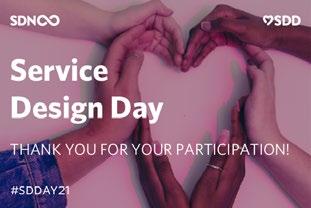
Highlights of the day were workshop: Starting with Inclusive Design led by Max Masure (they/them) and Natalie Kuhn (she/her), and the Touchpoint Roundtable: Service Design and Systems Thinking.
Our amazing chapters organised events open to participants worldwide, to raise awareness, educate and celebrate service design. Overall, there were more than 600 individuals that attended online events. A big thank you to our chapter representatives for dedicating their time to help grow and connect the service design communities — we couldn't have done it without you.
Thank you to everyone who participated in Service Design Day and for making it so special. It was powerful to recognise Service Design Day with you and we look forward to continuing this initiative for the greater good.
Written by Sonja Jazic –Project Manager at the SDN
Touchpoint 12-3 83 inside sdn
Financial Inclusion at the Forefront
We are thrilled to announce that the SDN Accreditation Programme has a new financially inclusive pricing structure that considers the global disparity in currency value.
We at the SDN are constantly looking to improve our programmes and we are committed to creating a more diverse community of SDN Accredited Service Designers who can access all the possibilities our organisation has to offer, regardless of where they live.
Accordingly, the recently established pricing structure eliminates a previously flat accreditation
fee and replaces it with a multitiered pricing approach which considers the disparity in currency value between countries.
Using the World Bank's* country income index as a guiding framework, accreditation fees will now be based on where the applicant lives, which correspond to economic categories defined by the World Bank:
The SDN Accreditation Programme is an independent certification confirming that you have met established criteria and competencies within the field of service design, and our goal is to establish a recognised level of expertise for service designers working in the industry.
We are confident that a more diverse community of global SDN Accredited Service Designers will unlock the full potential of the SDN Accreditation Programme to our community and position our accredited members at the forefront of innovation!
Explore the accreditation portal to learn more and consider applying for your SDN accreditation today. Be part of the esteemed group of accredited members and be an ambassador for service design and the SDN in your country!
Visit: www.service-designnetwork.org/accreditationprogramme-portal
*To learn more about where your country falls within the World Bank’s country designations, please have a look:

Touchpoint 12-3 84
Income categories* High income Upper middle income Lower middle income Low income SDN Practitioner Accreditation fees 460 Euros 305 Euros 150 Euros 100 Euros SDN member Non-member 1,620 Euros 1,080 Euros 540 Euros 360 Euros SDN Professional/Master Accreditation Fees 1,800 Euros 1,200 Euros 600 Euros 400 Euros
How can I read Touchpoint?
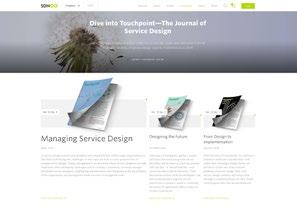
Printed copies
Individual printed copies can be purchased via the SDN website.
Benefits for SDN Members
SDN members are entitled to a free printed copy of each new issue of Touchpoint (postage cost not included).
In addition, SDN members receive a 50% discount on back issues (Touchpoint Vol. 1 to Touchpoint Vol. 6).

Online access
Full-issue PDFs can be purchased via the SDN website and via Issuu.
Articles from our archive can be read online via the SDN website by becoming a community member for free.
Selected articles may be read via Issuu website and app and are also published on Medium.
Benefits for SDN Members
SDN members have access to full-issue PDFs and articles at no charge, up to and including the most recent issue.
www.service-design-network.org
Touchpoint 11-1 85 rubrik 85 34 COMBINING SERVICE DESIGN, ECO-DESIGN AND CIRCULAR DESIGN Florie BugeaudRemond 50 WHAT’S CUSTOMER CENTRICITY GOT TO DO WITH THE CLIMATE CRISIS? Ben Reason, Anne van Lieren 53 PAVING THE WAY FOR SUSTAINABLE CHANGE Joost van Leeuwen 70 “WHAT NOW?” Joan Ball vol 12 no 3 | october 2021 18 € Service Design with the Planet in Mind







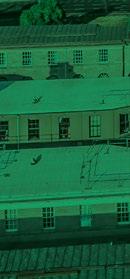






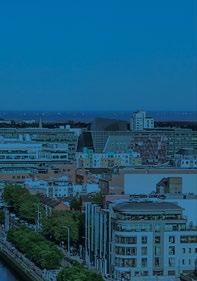

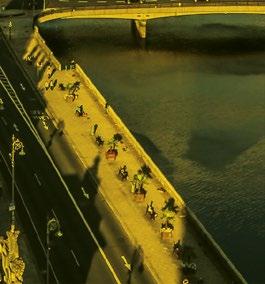


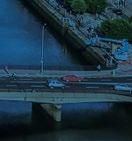




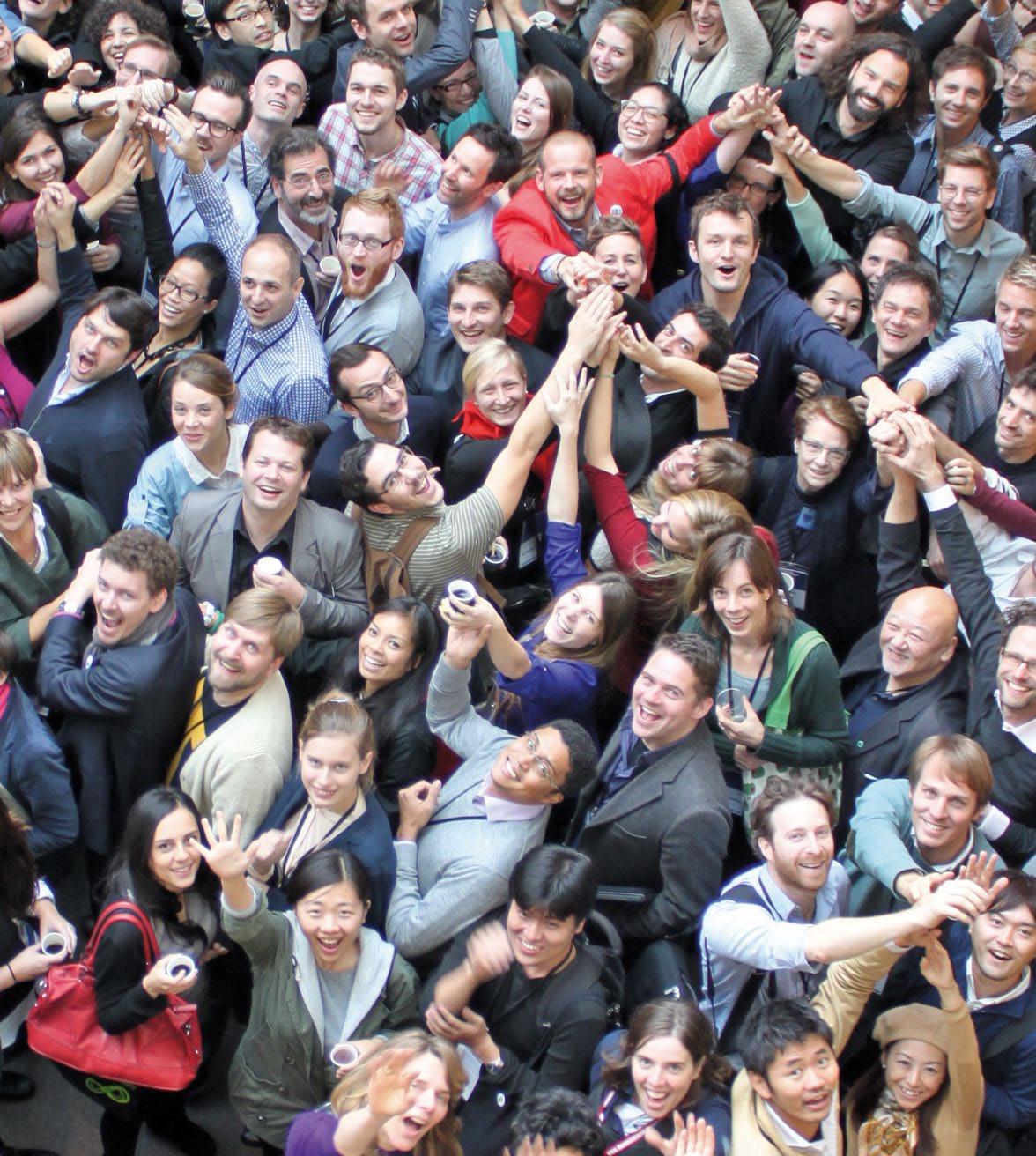

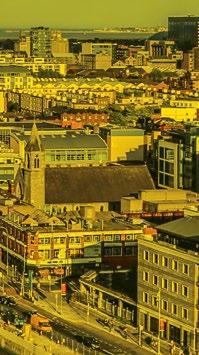








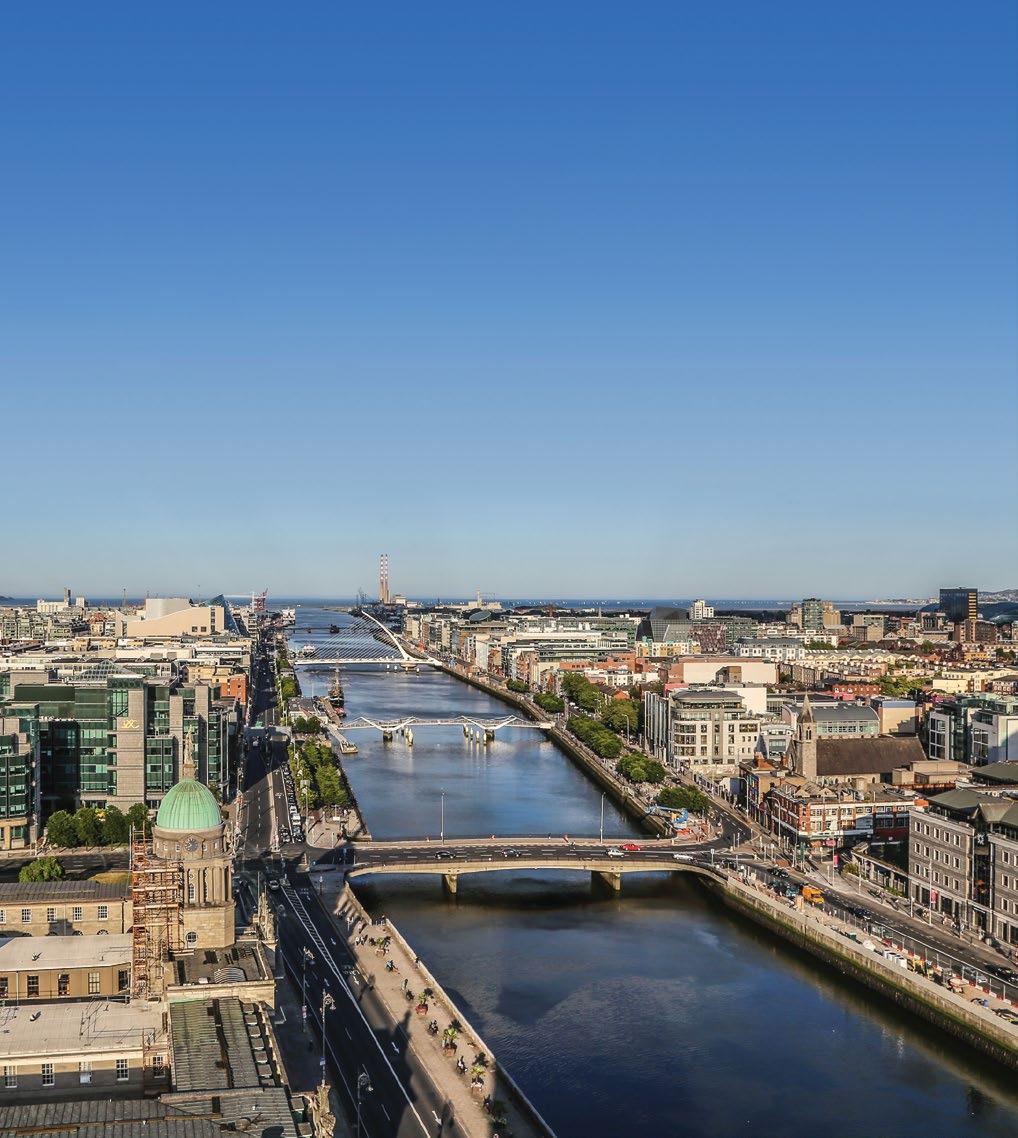























































































 Remco Lenstra is founder and CEO of Re-framed BV and Academic Director Business Design Thinking at Antwerp Management School.
Remco Lenstra is founder and CEO of Re-framed BV and Academic Director Business Design Thinking at Antwerp Management School.



























































